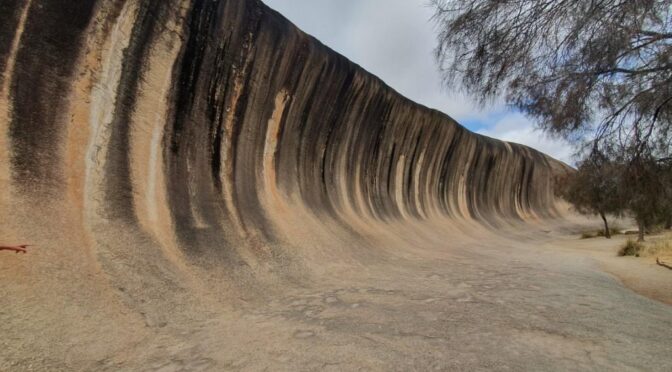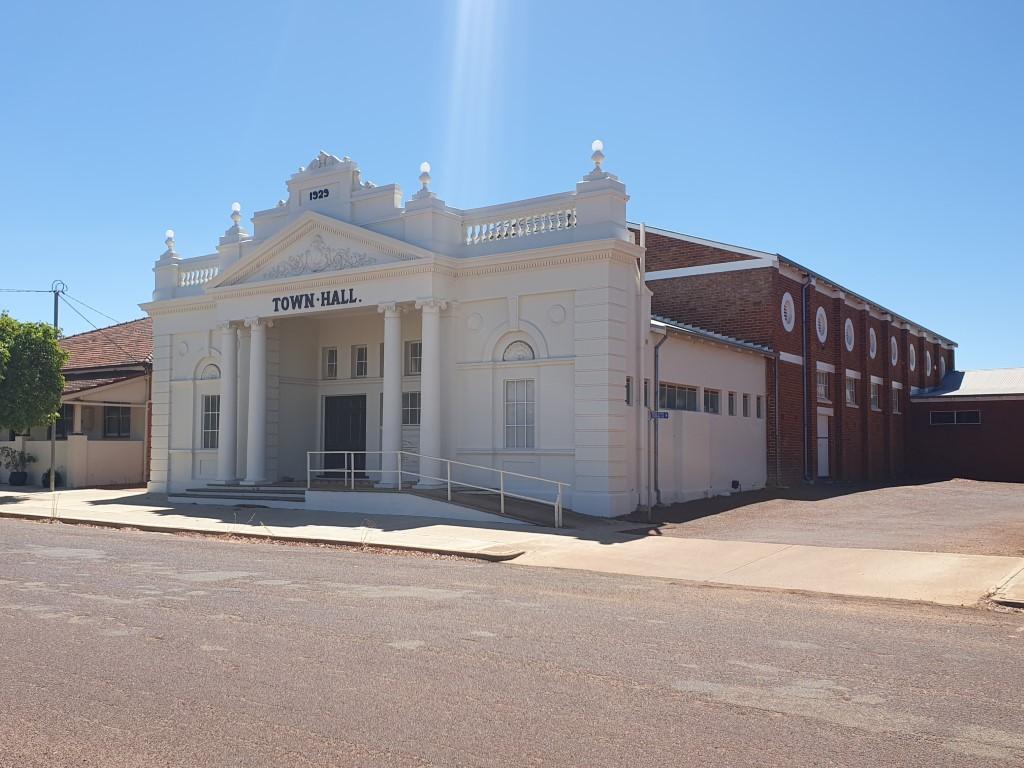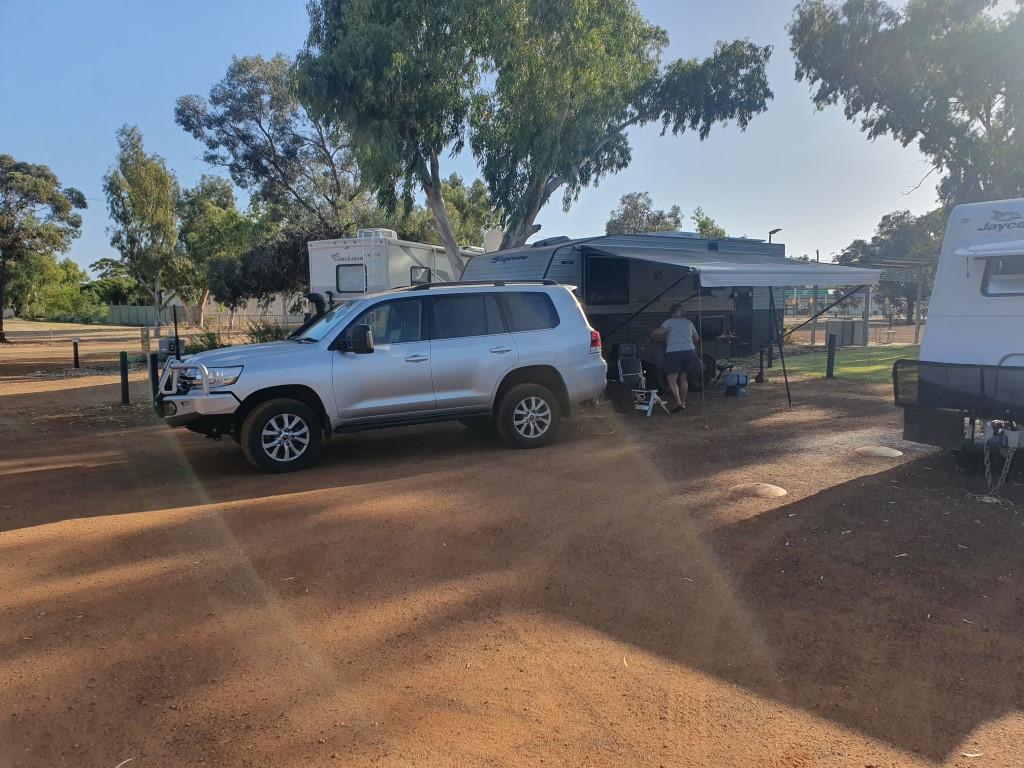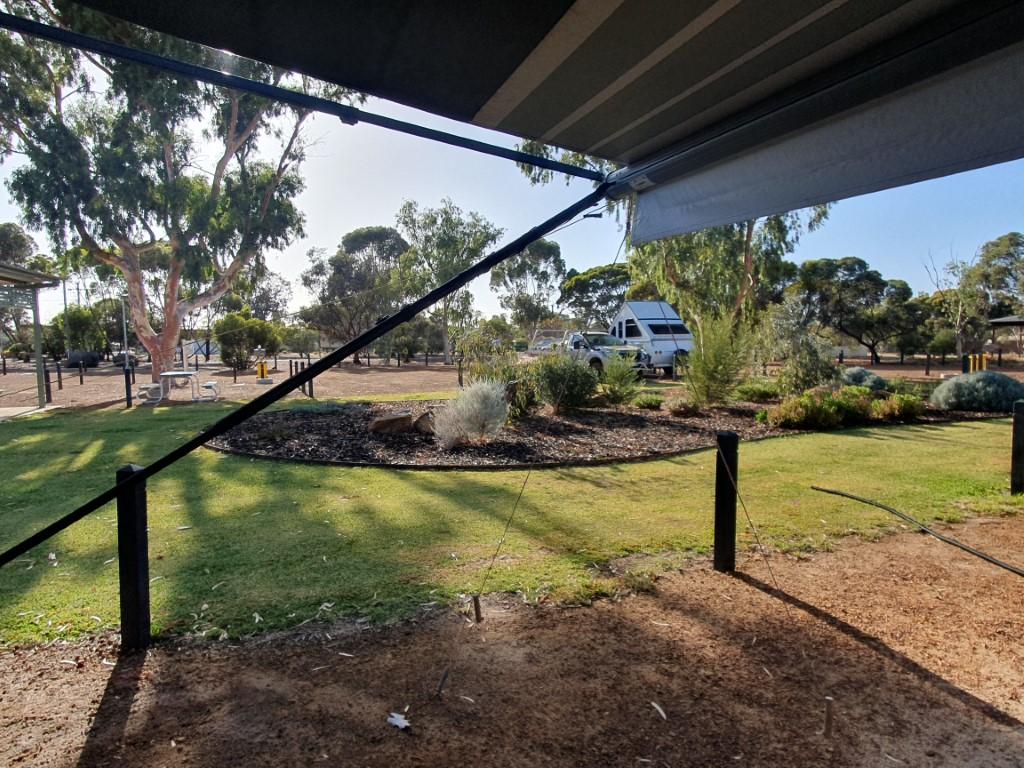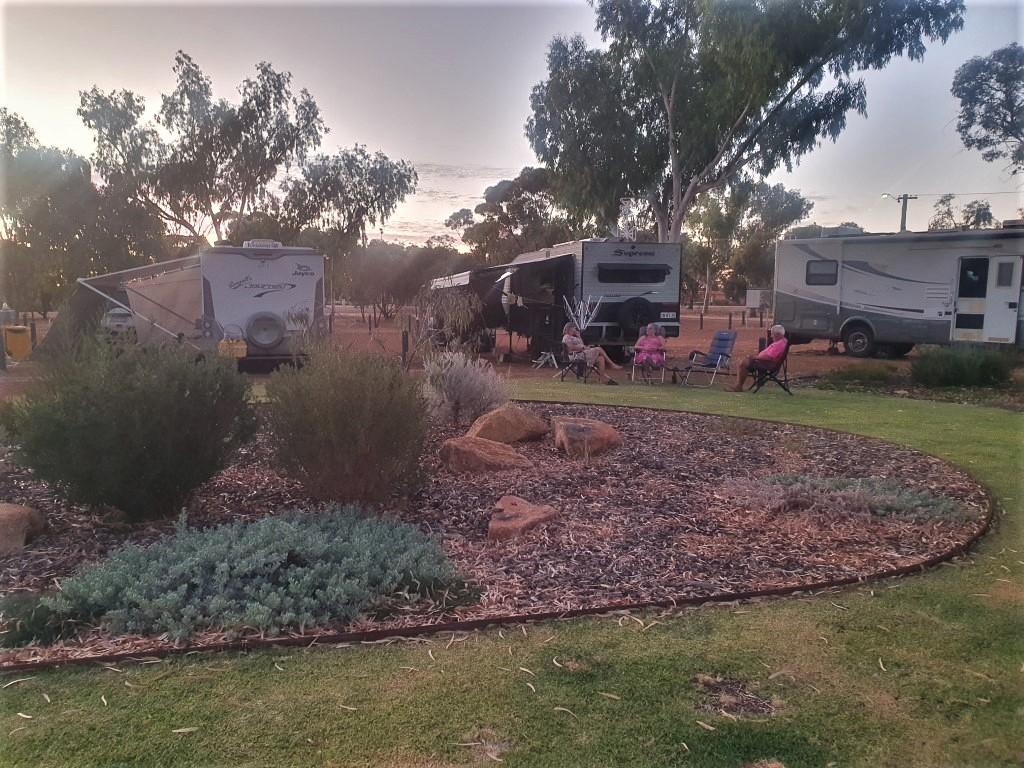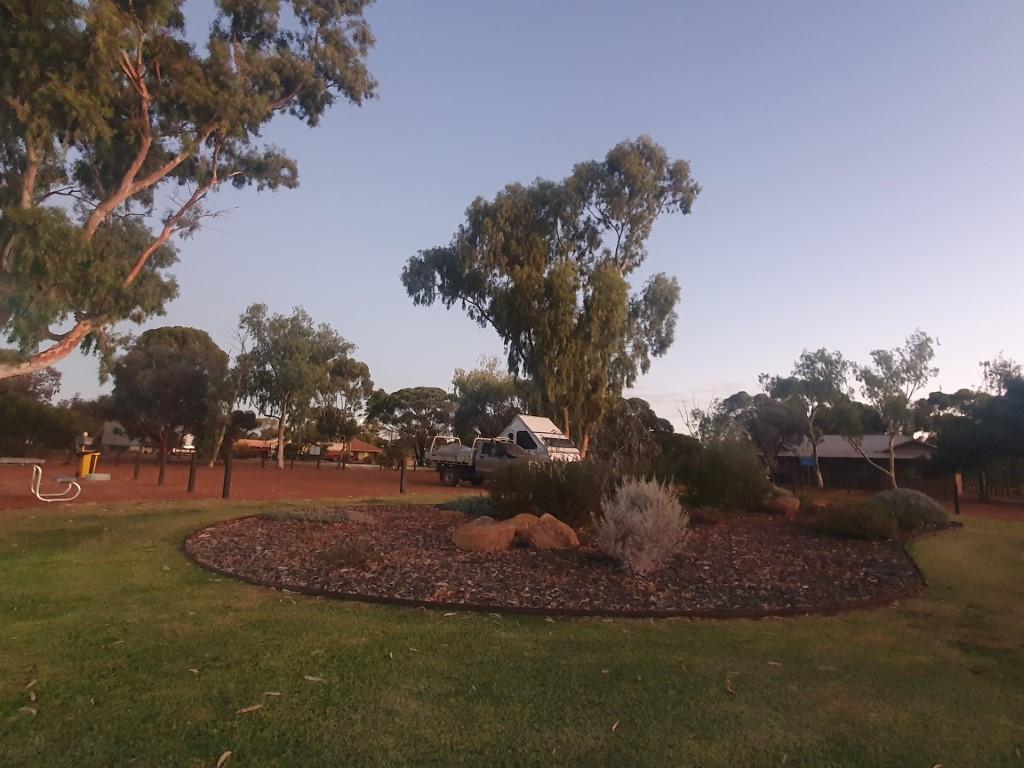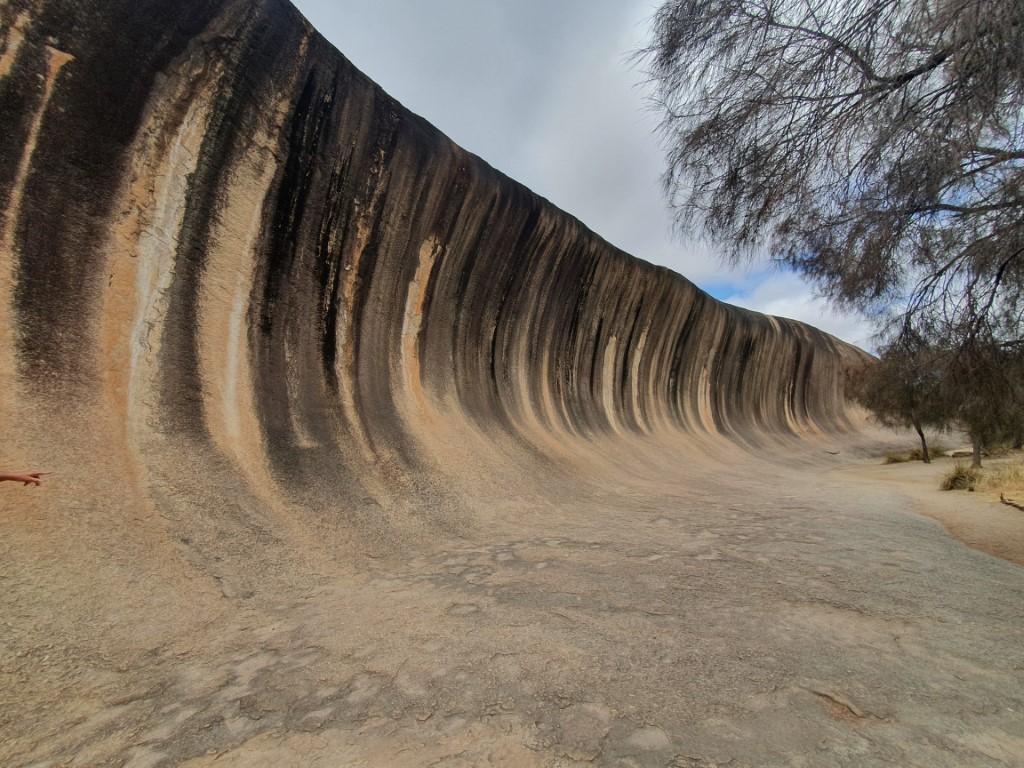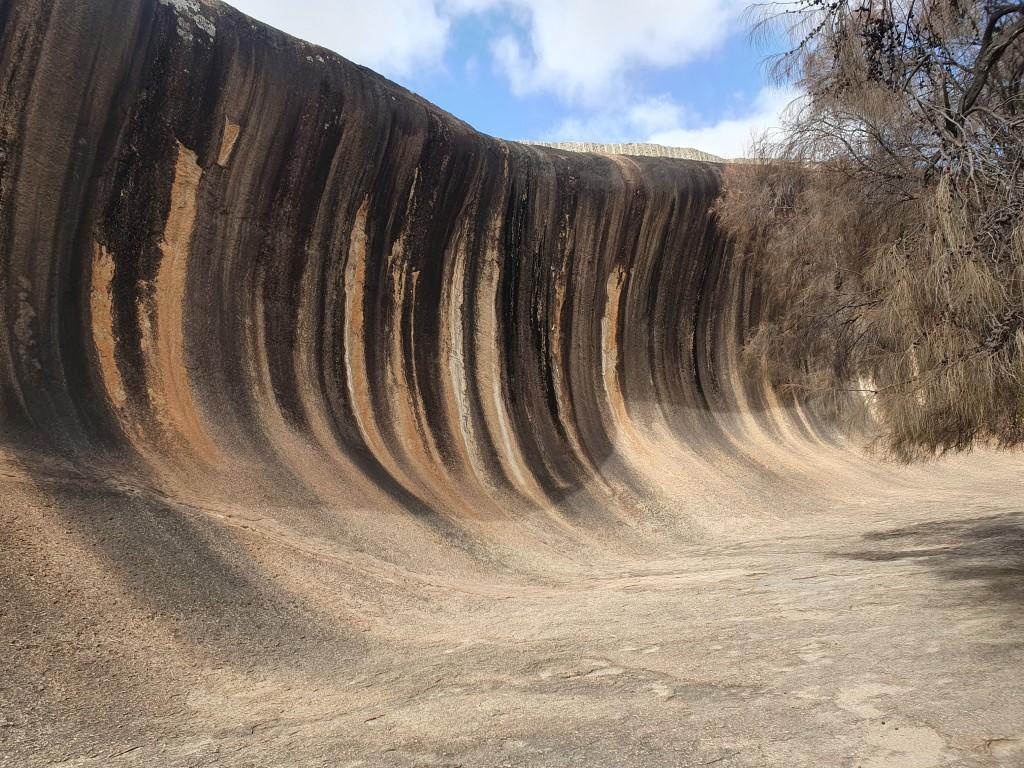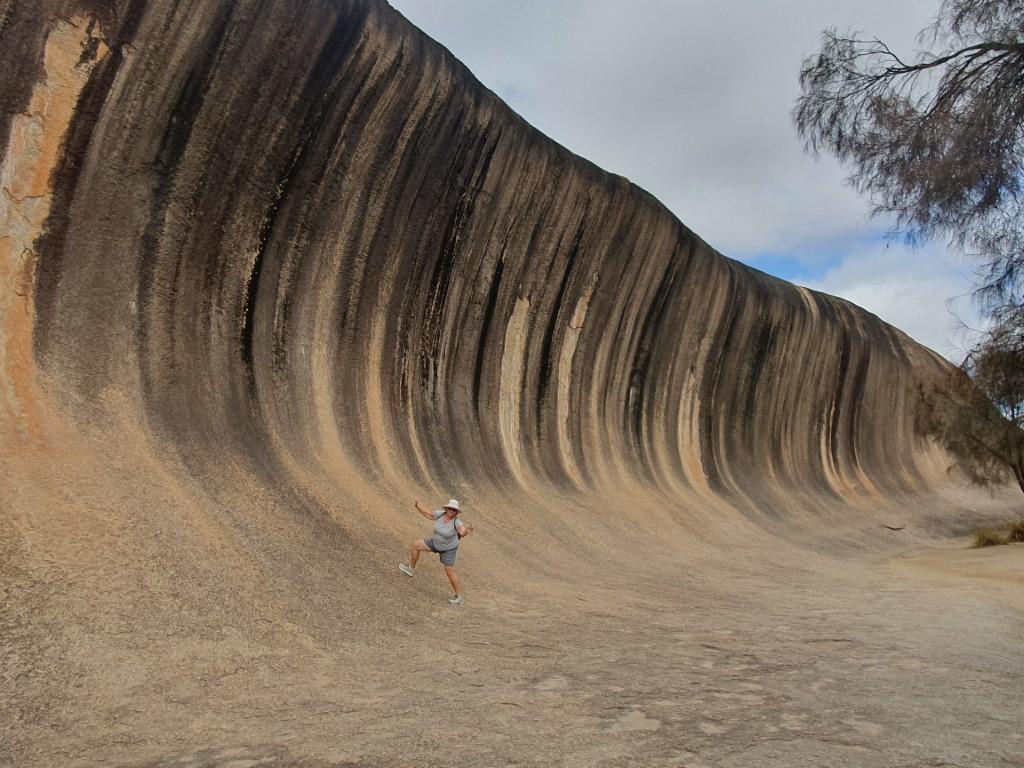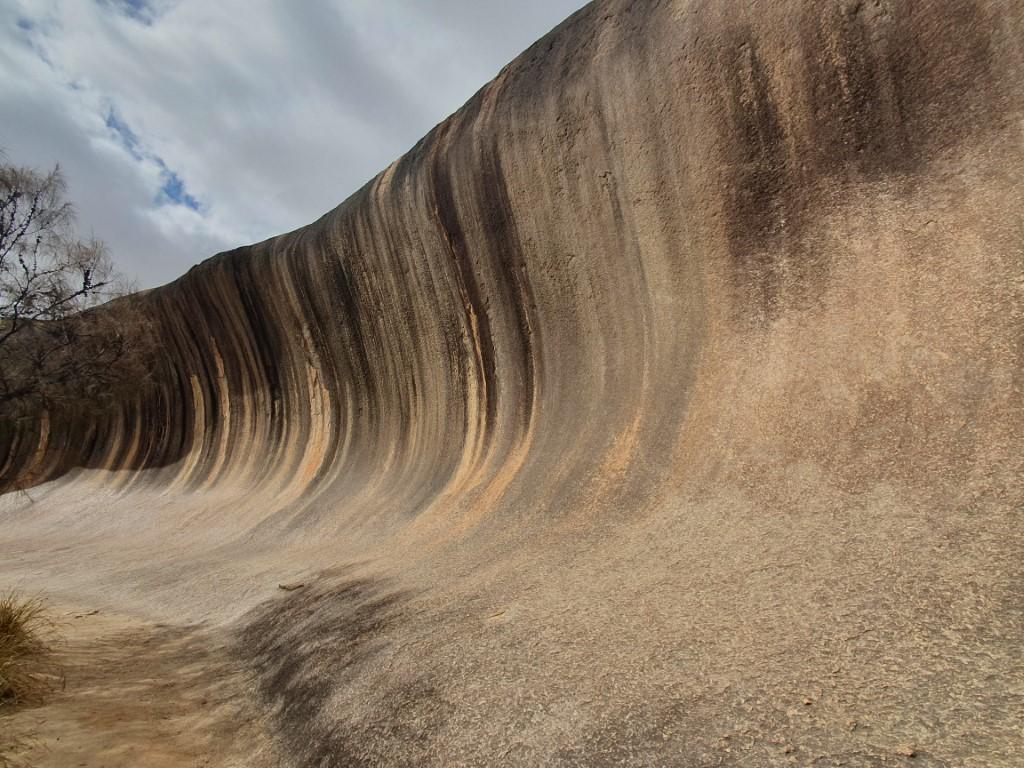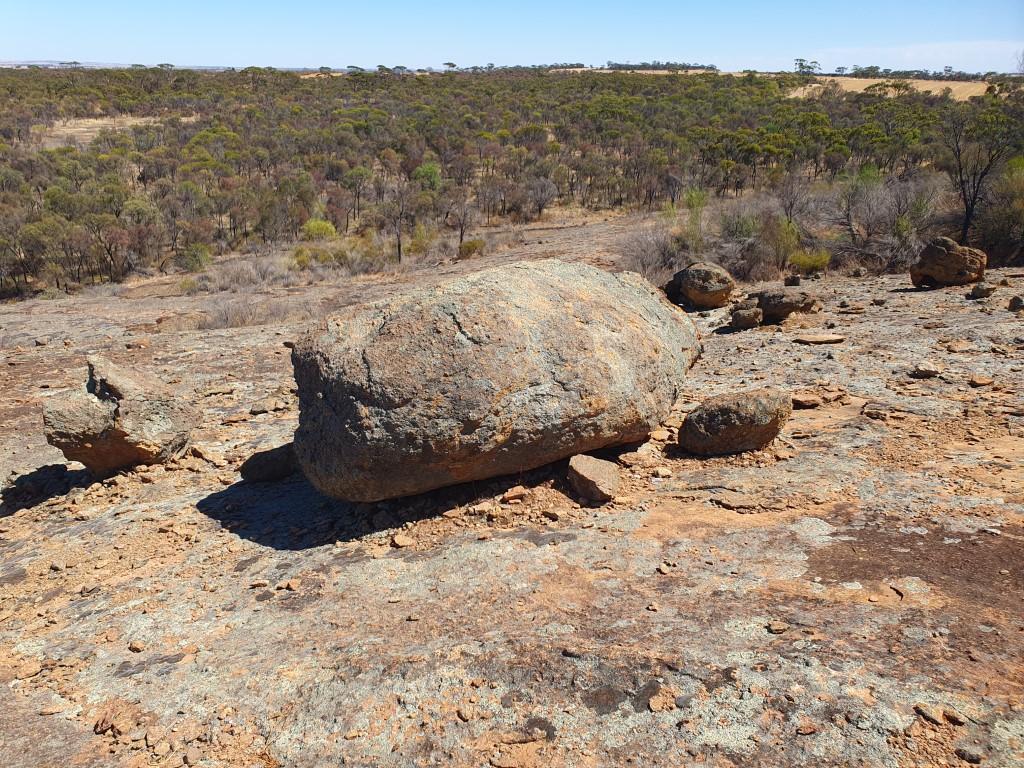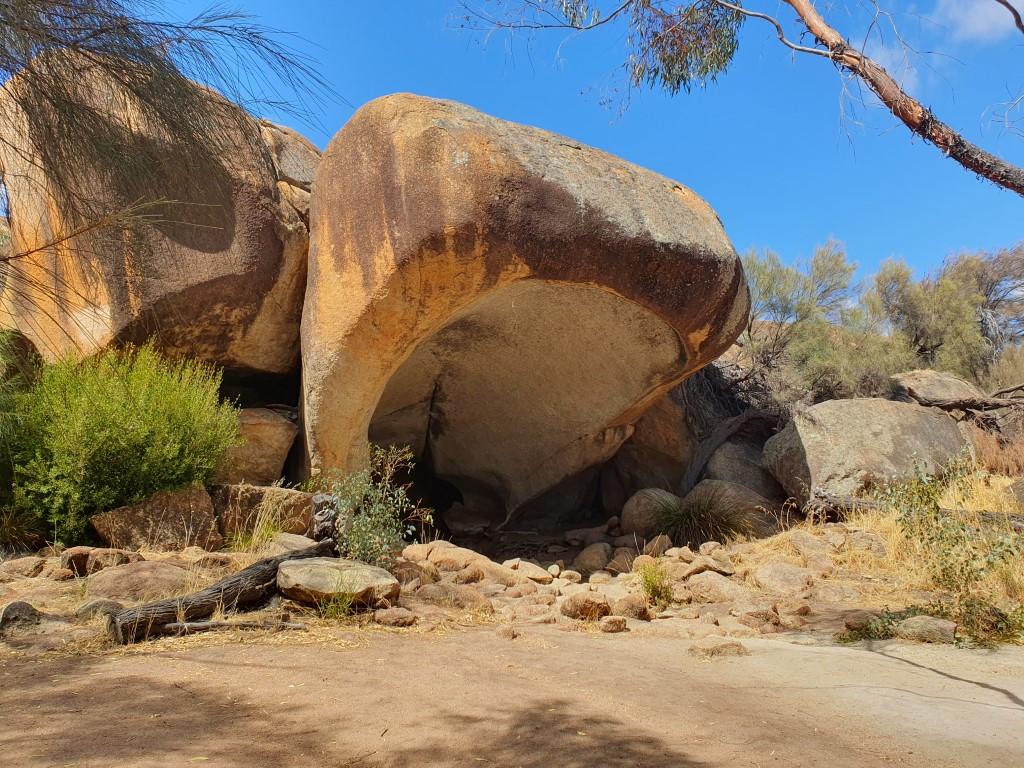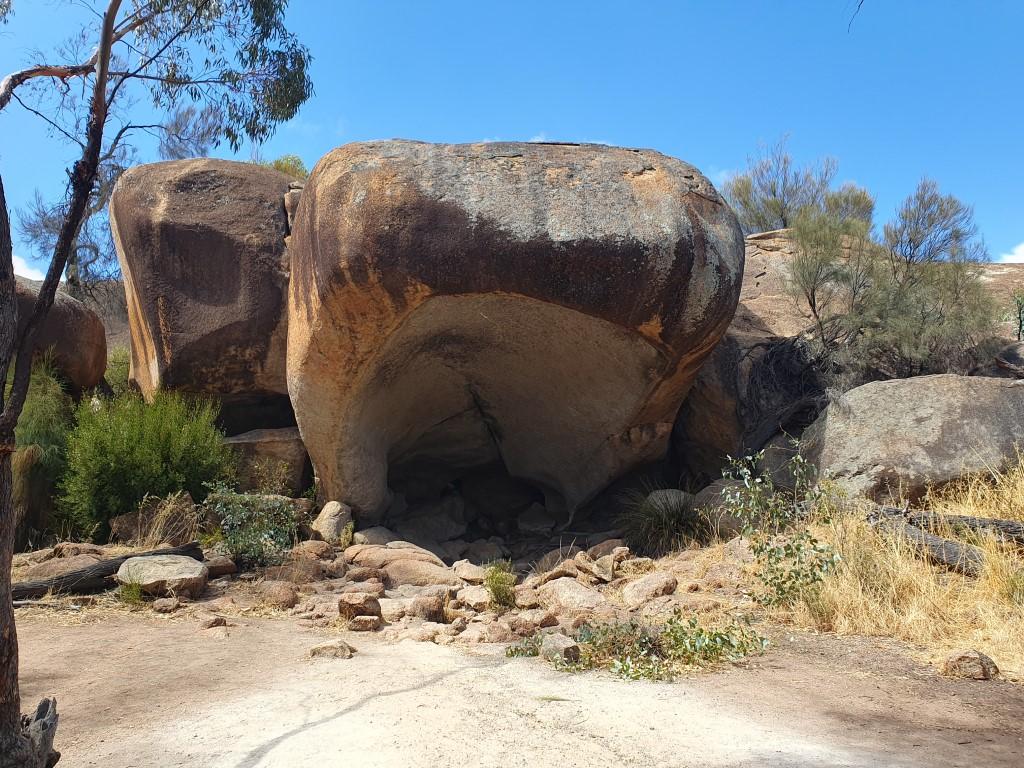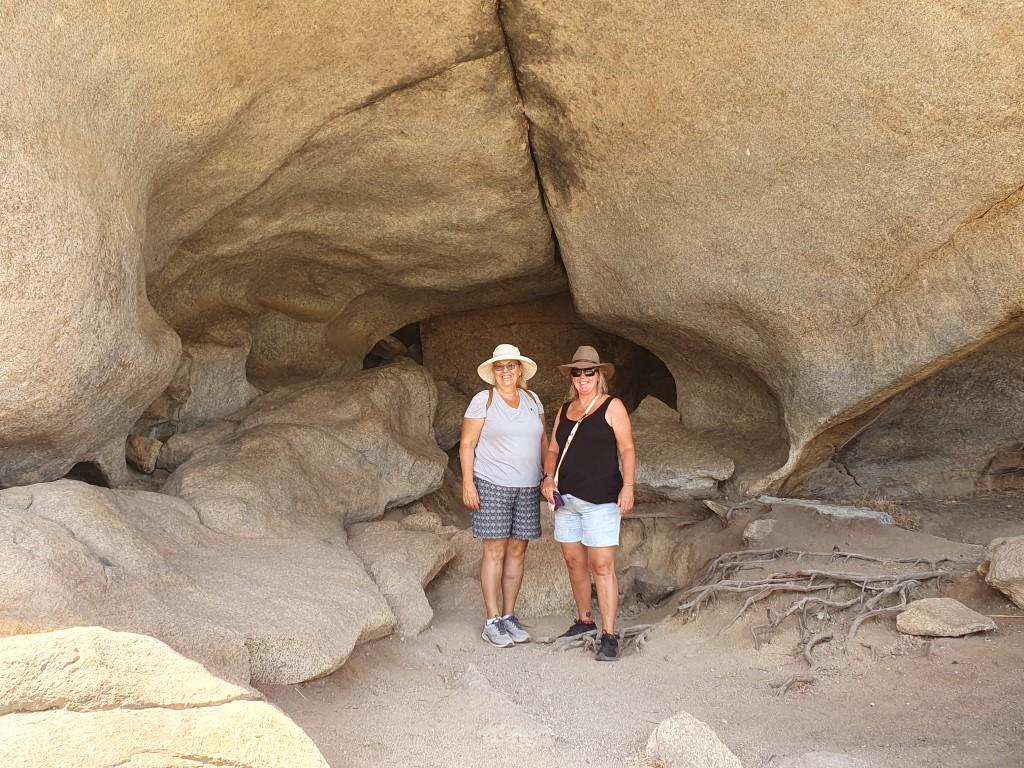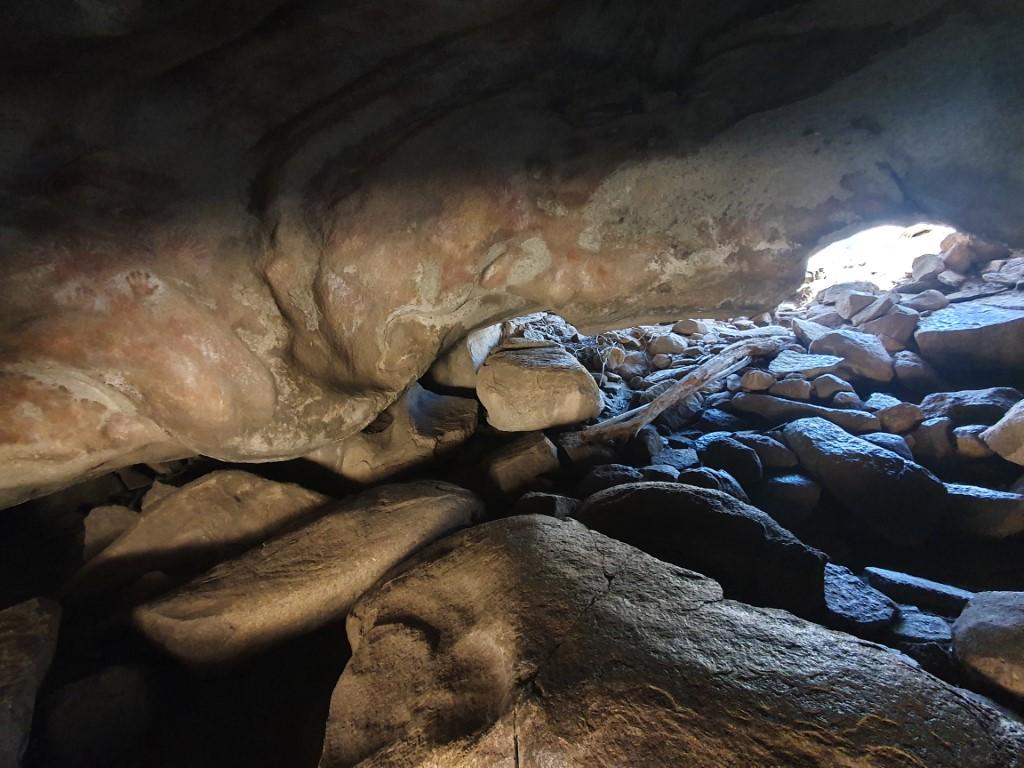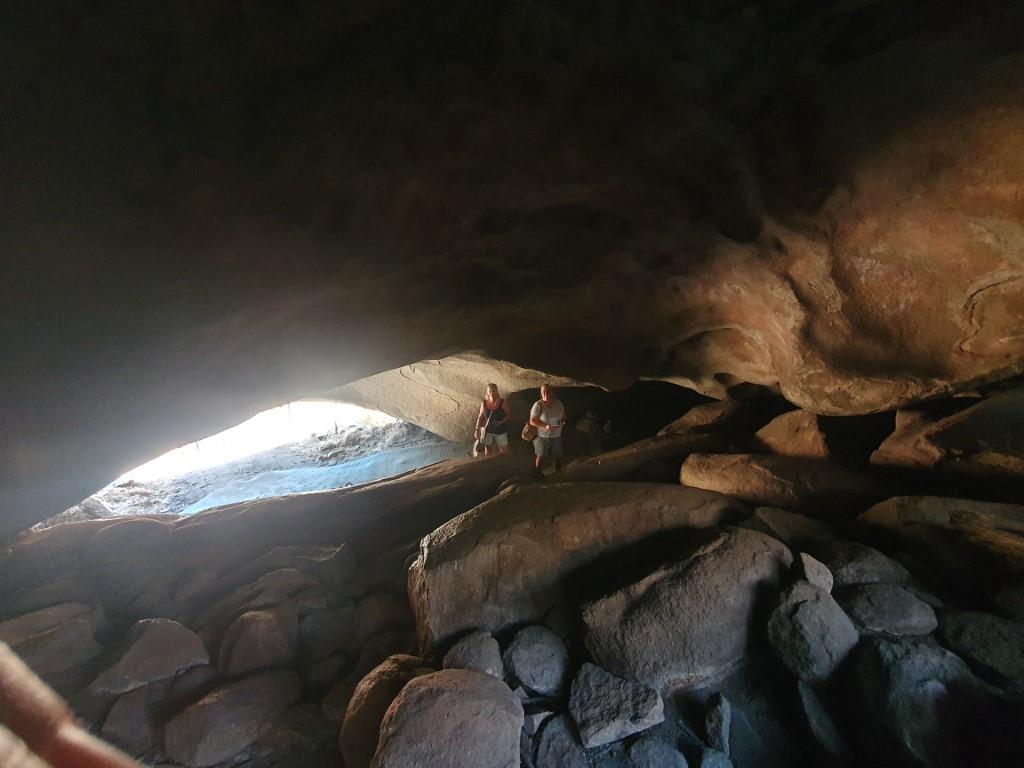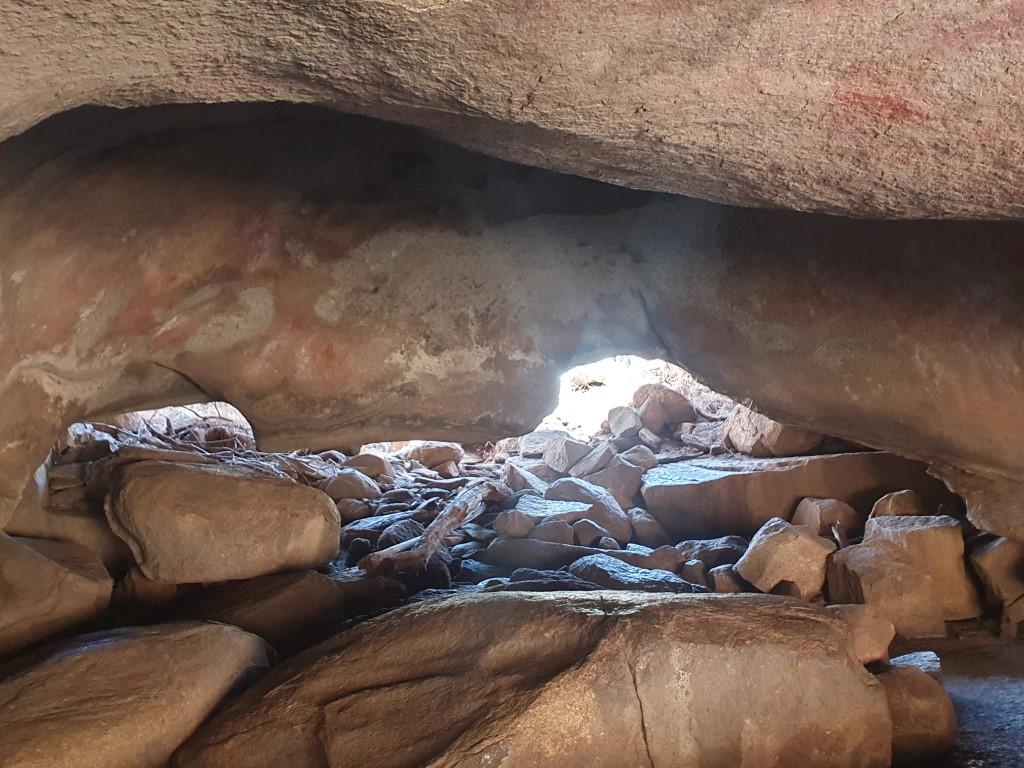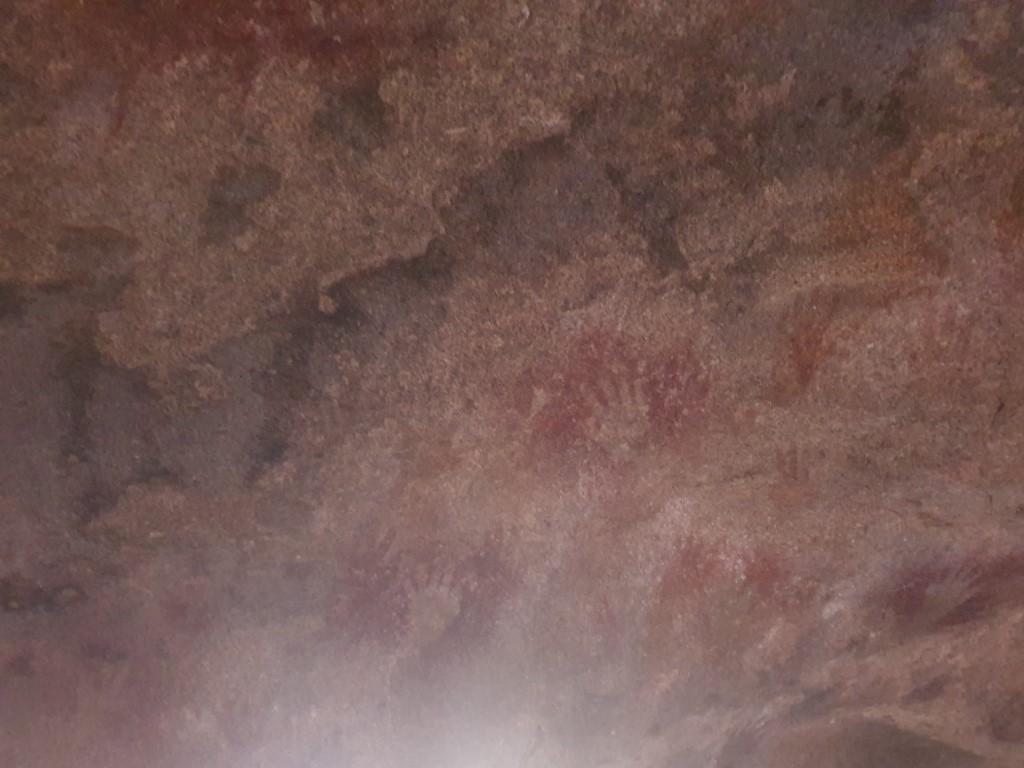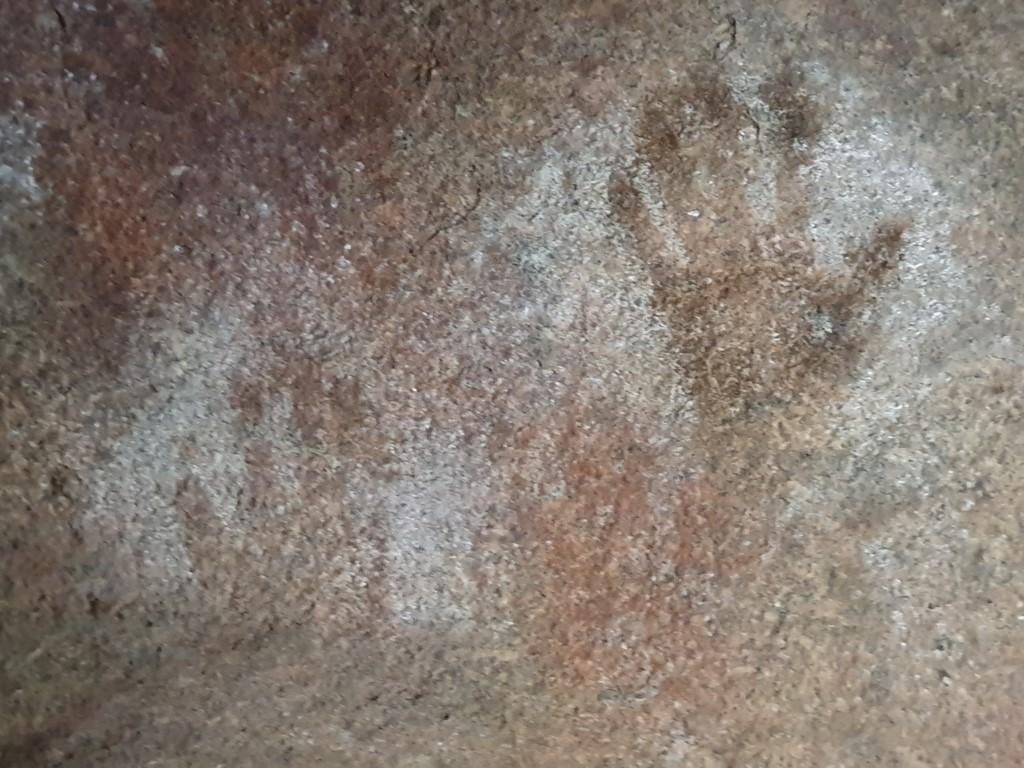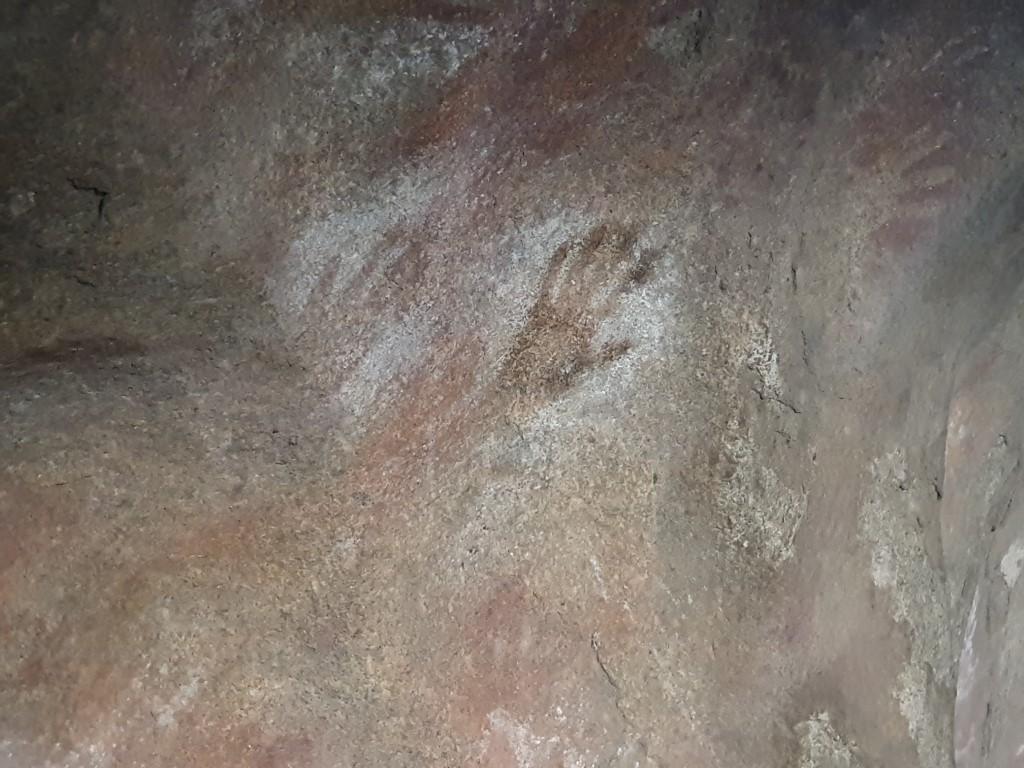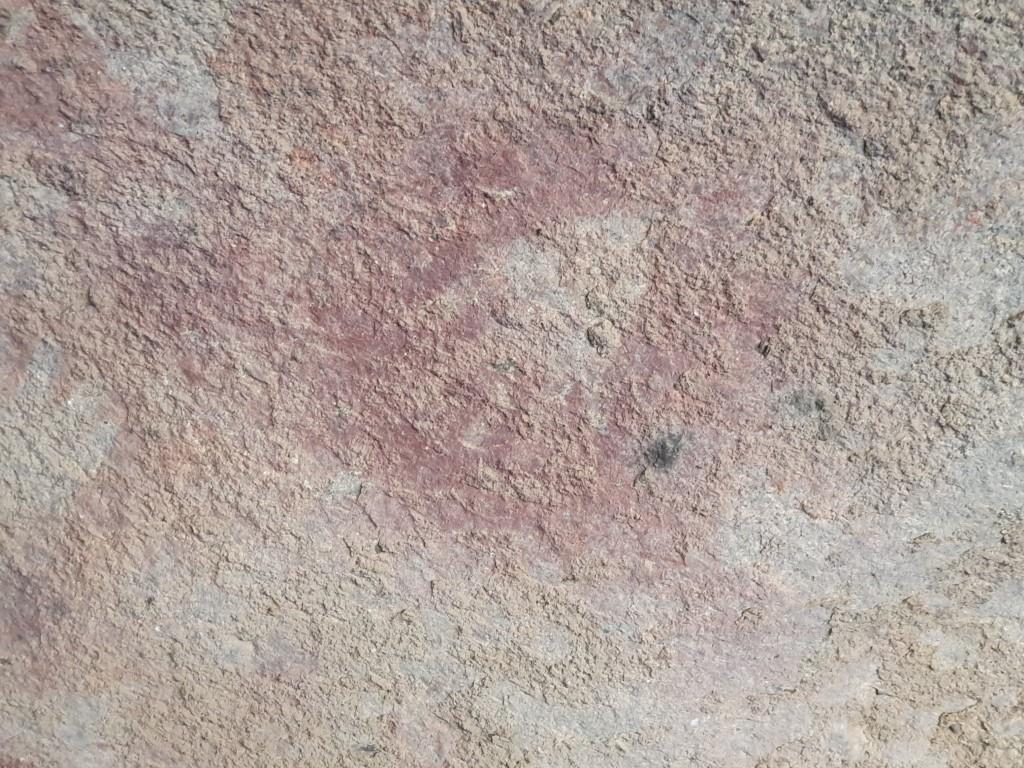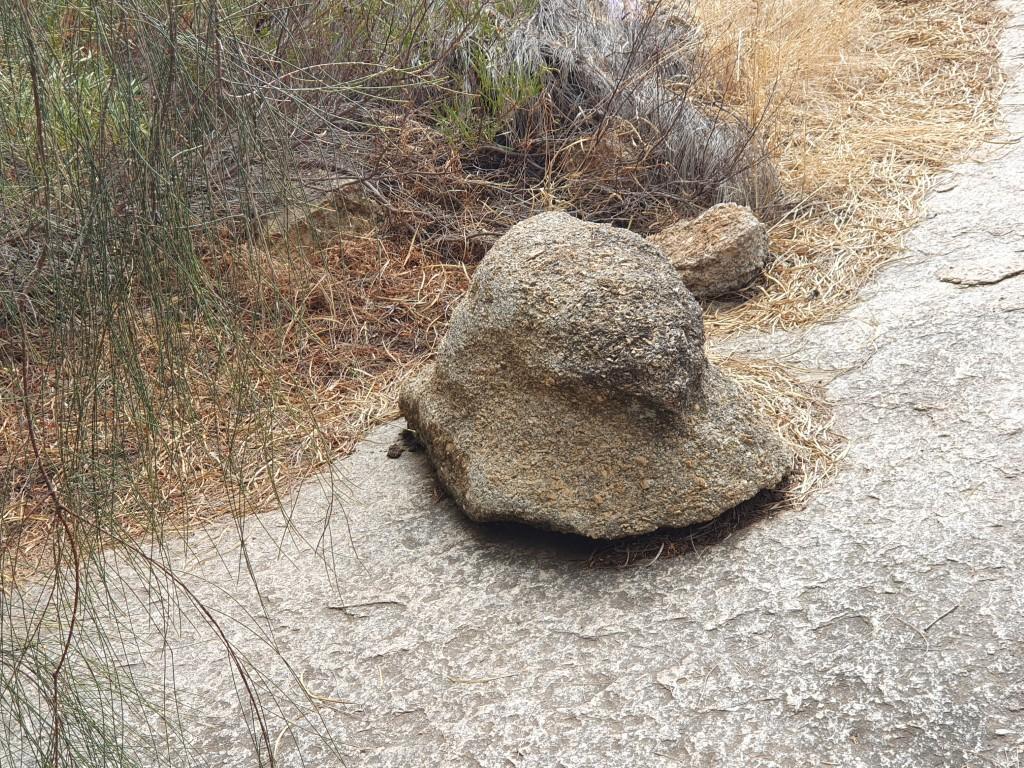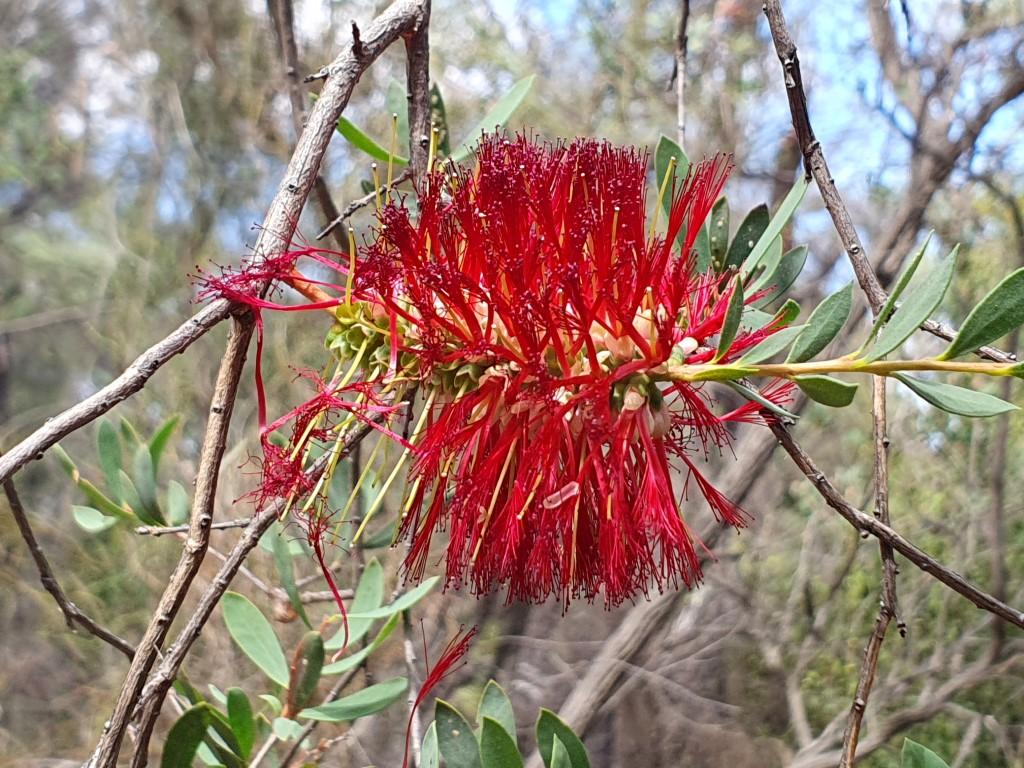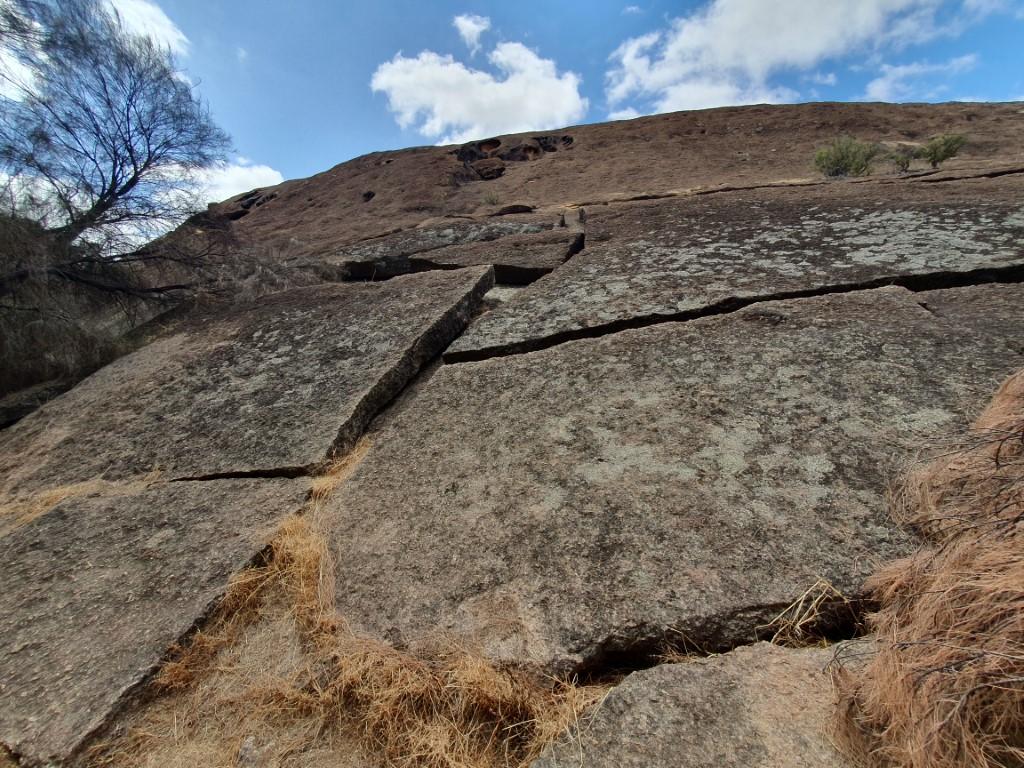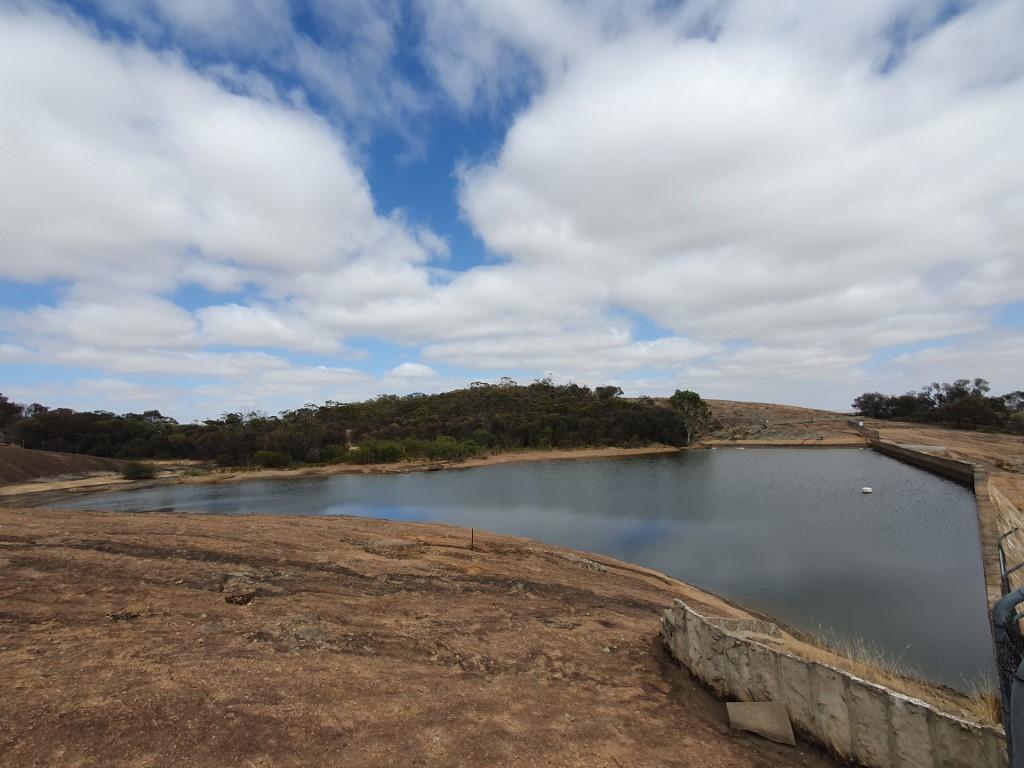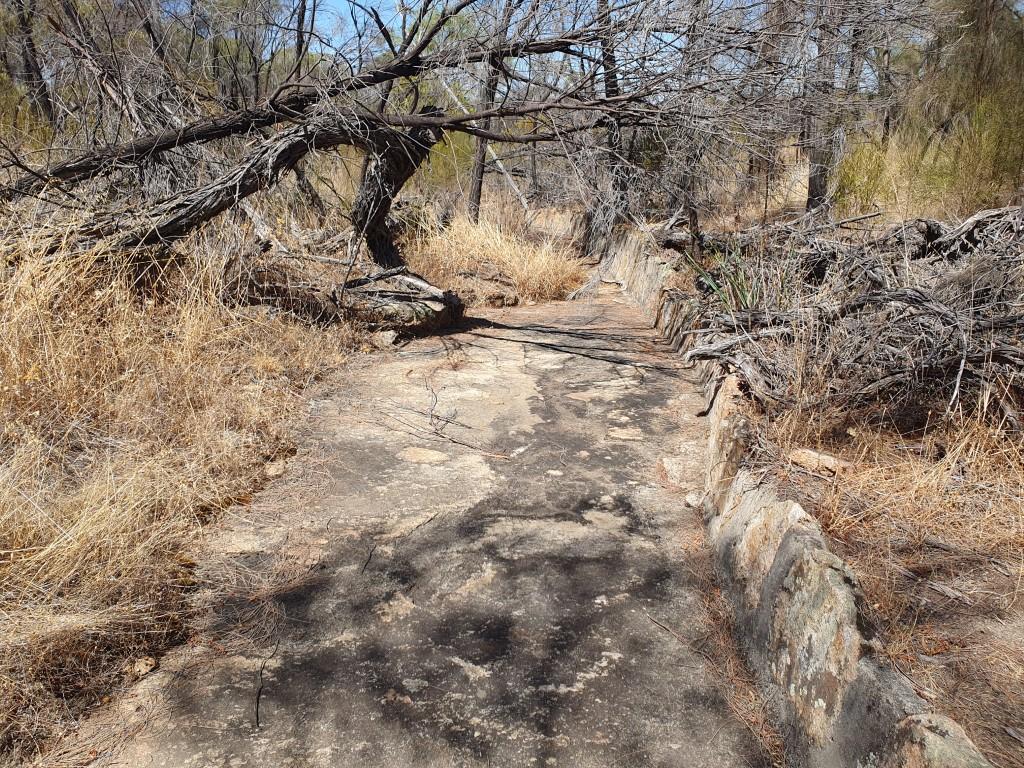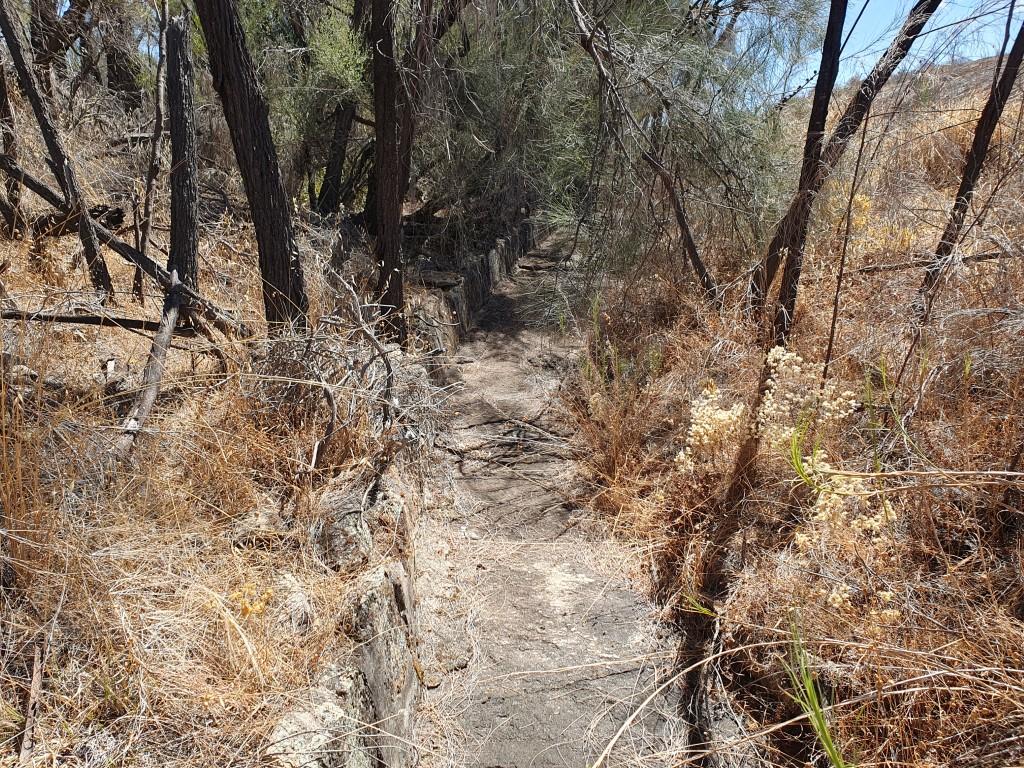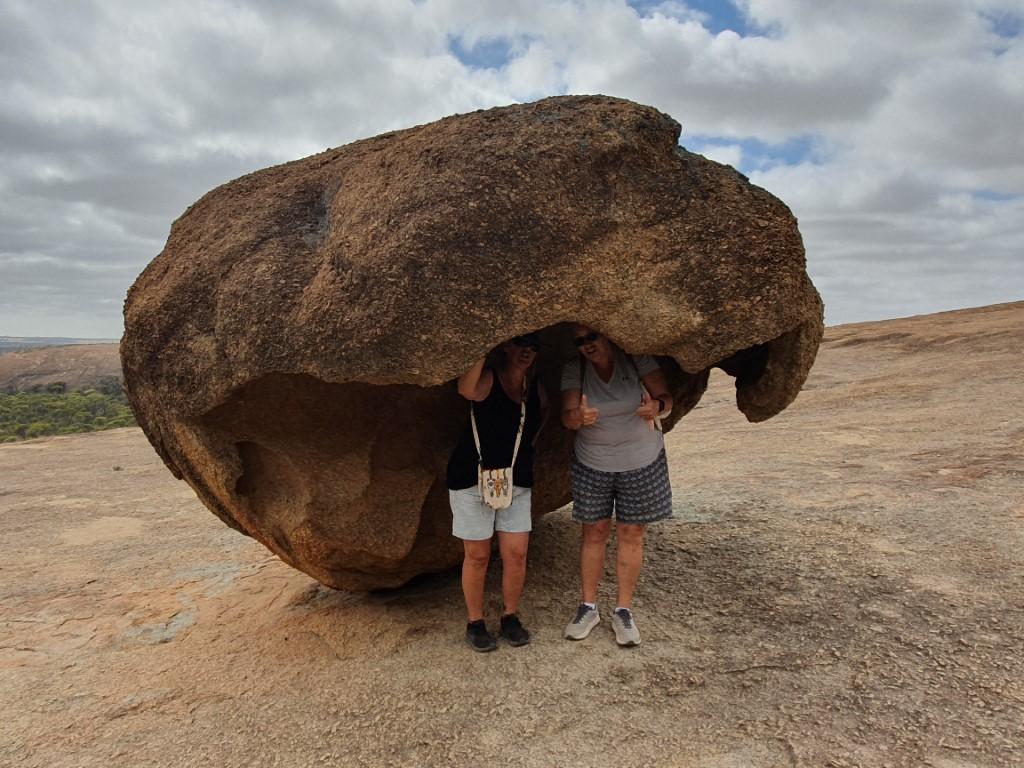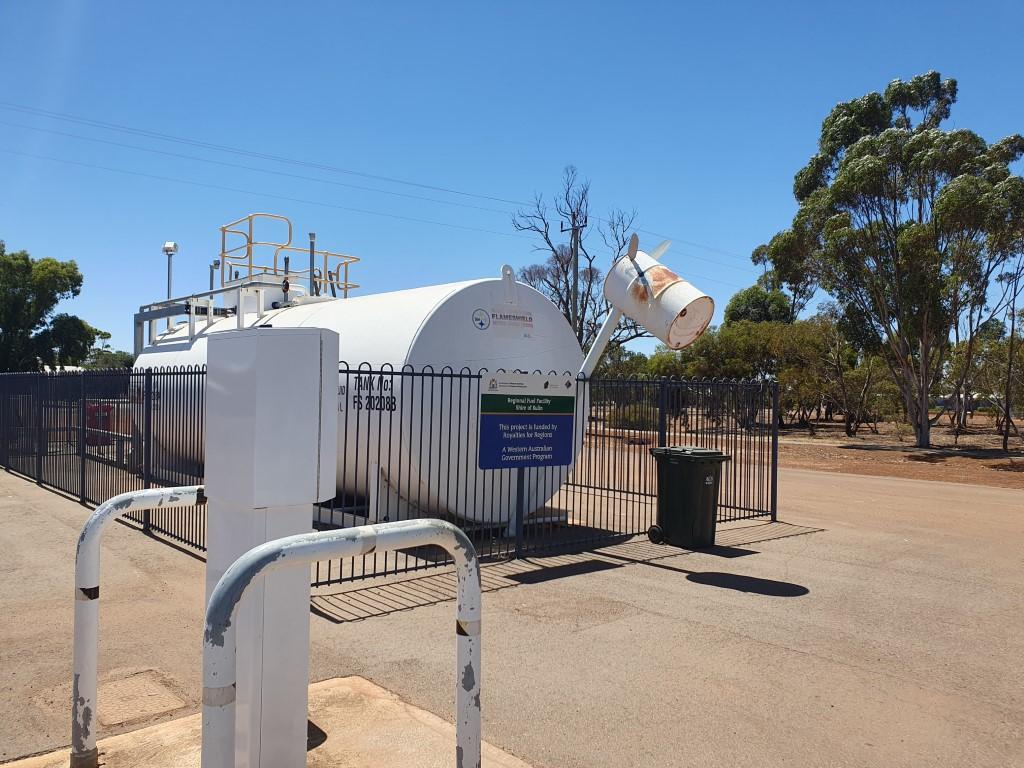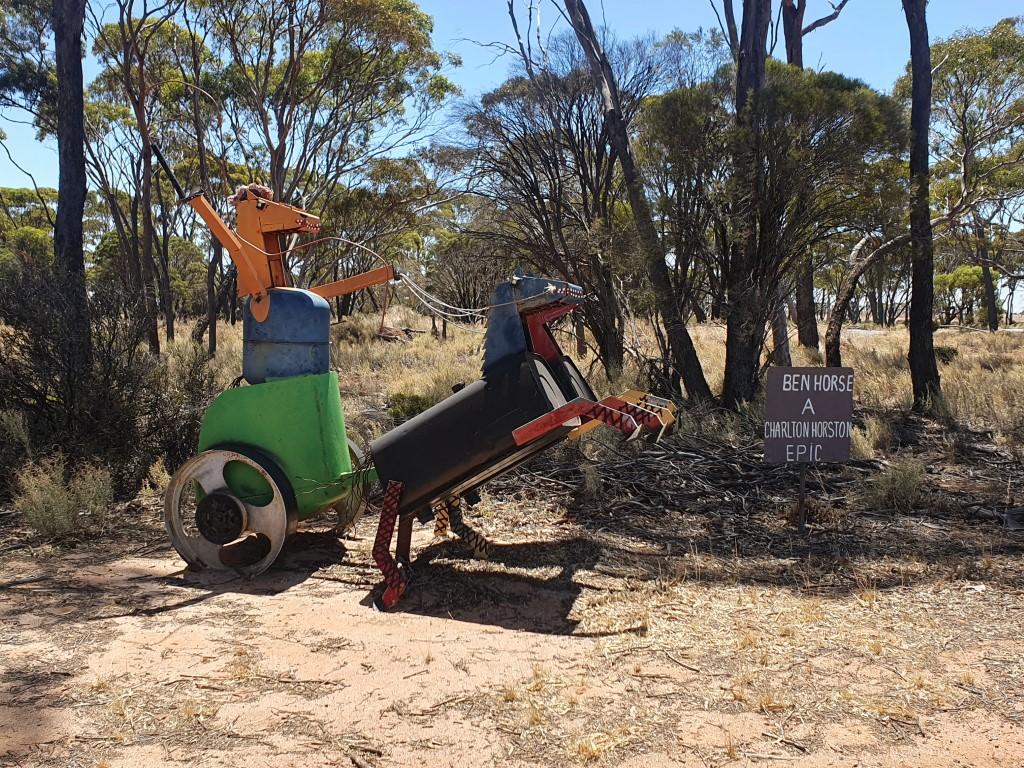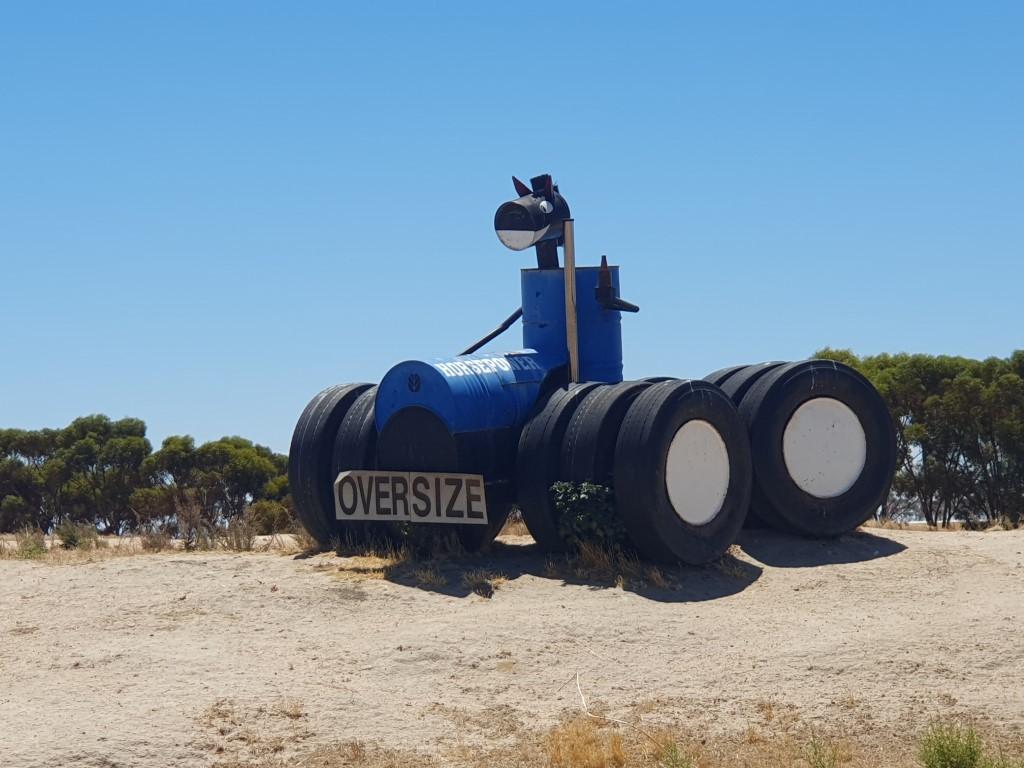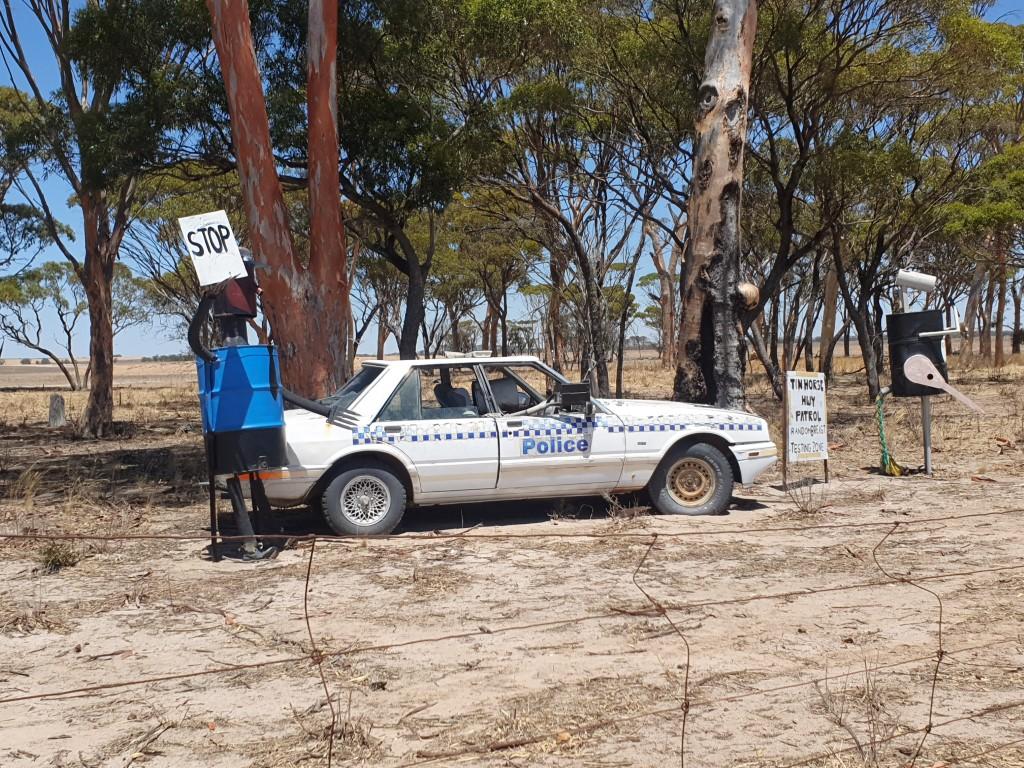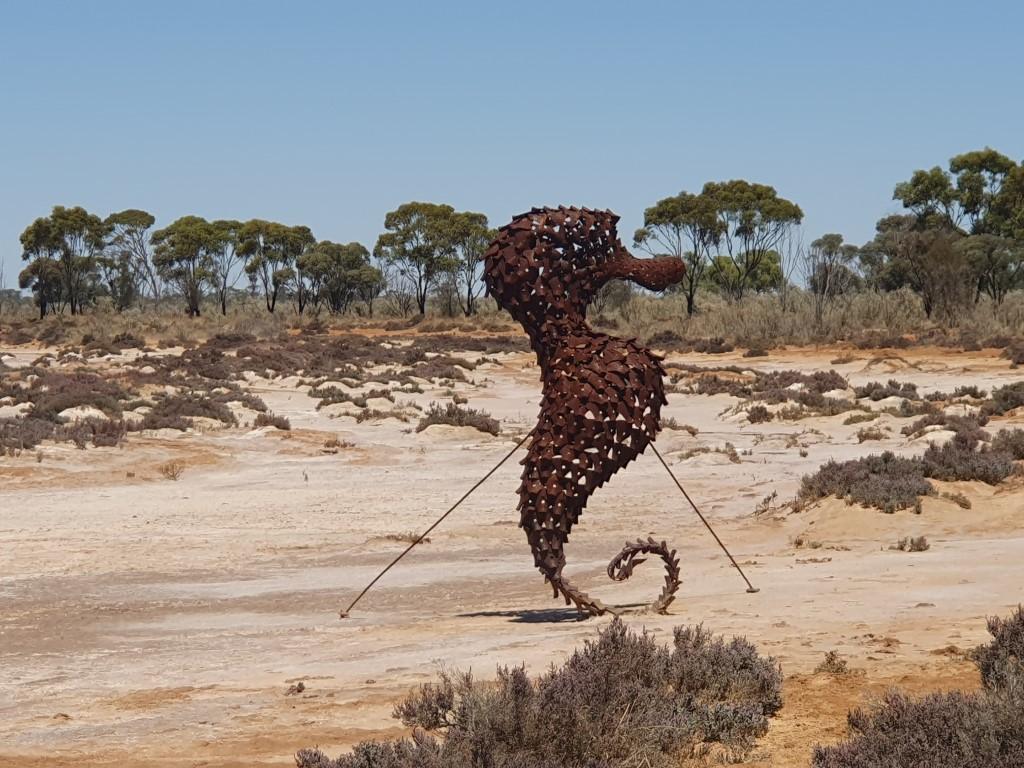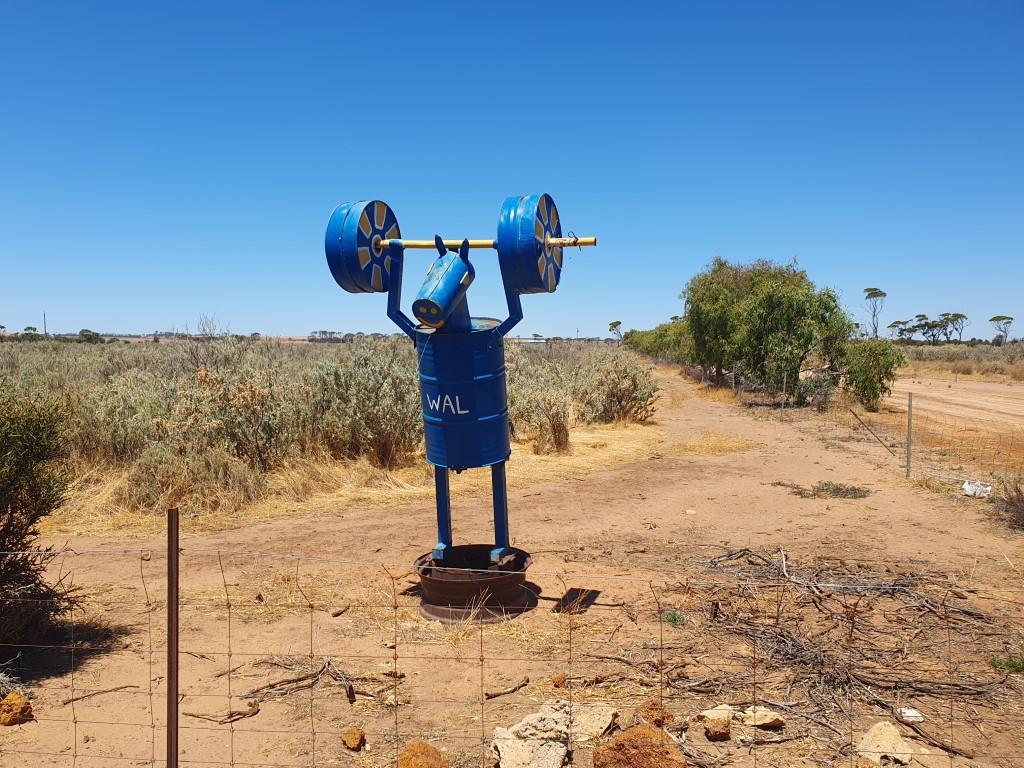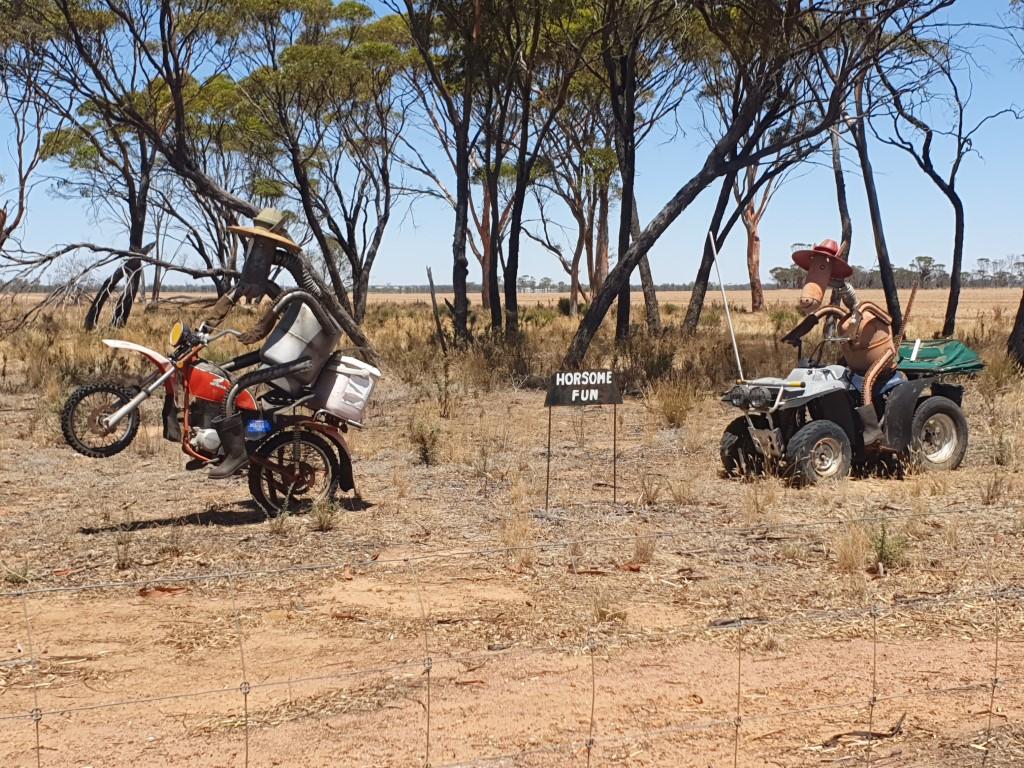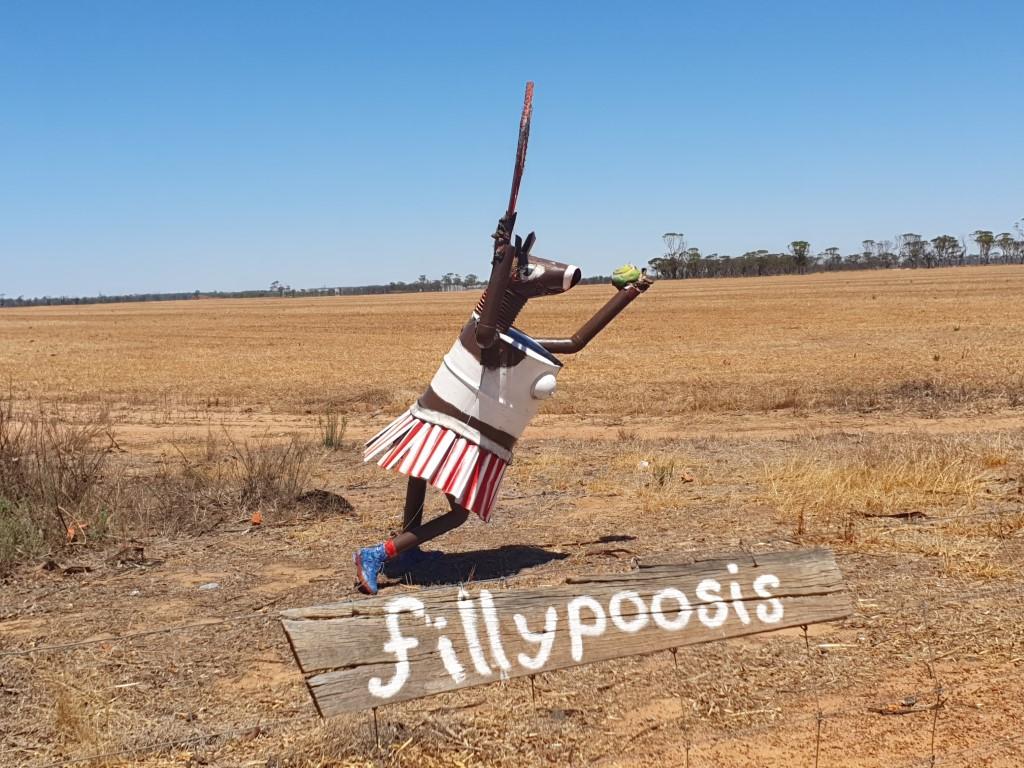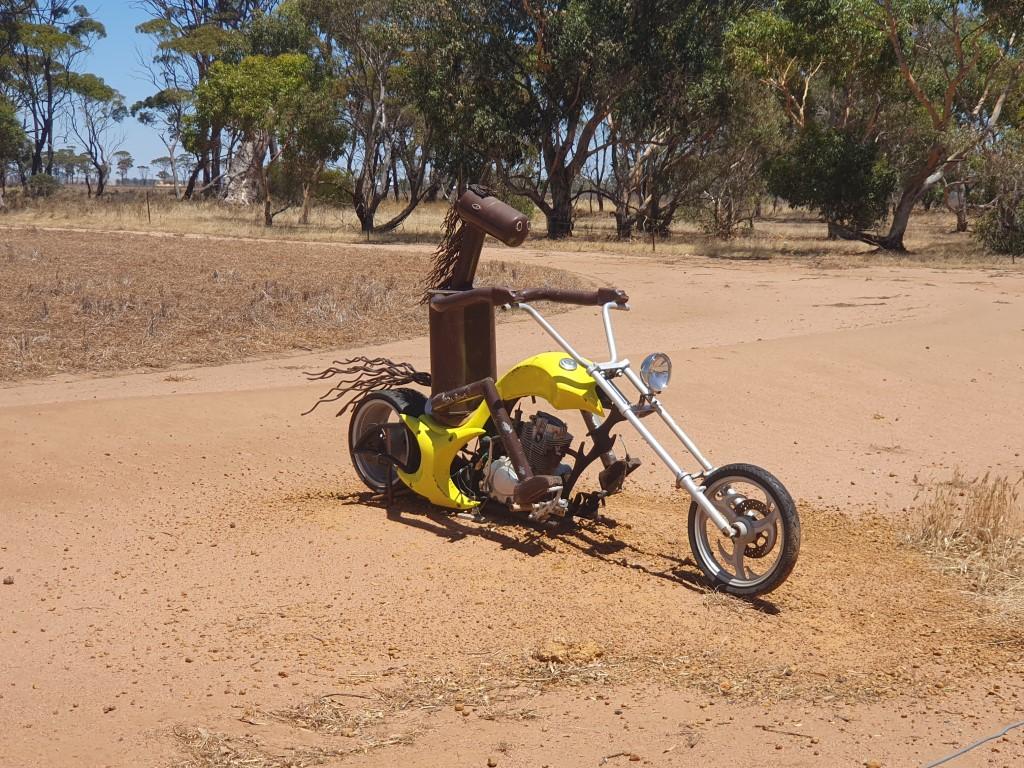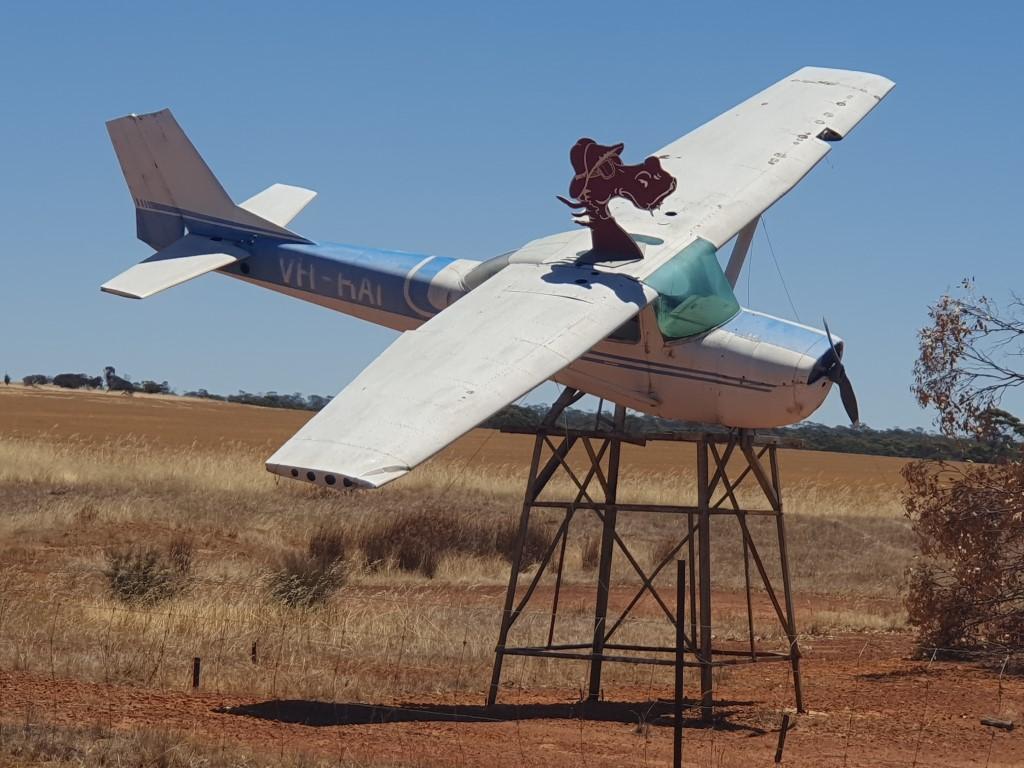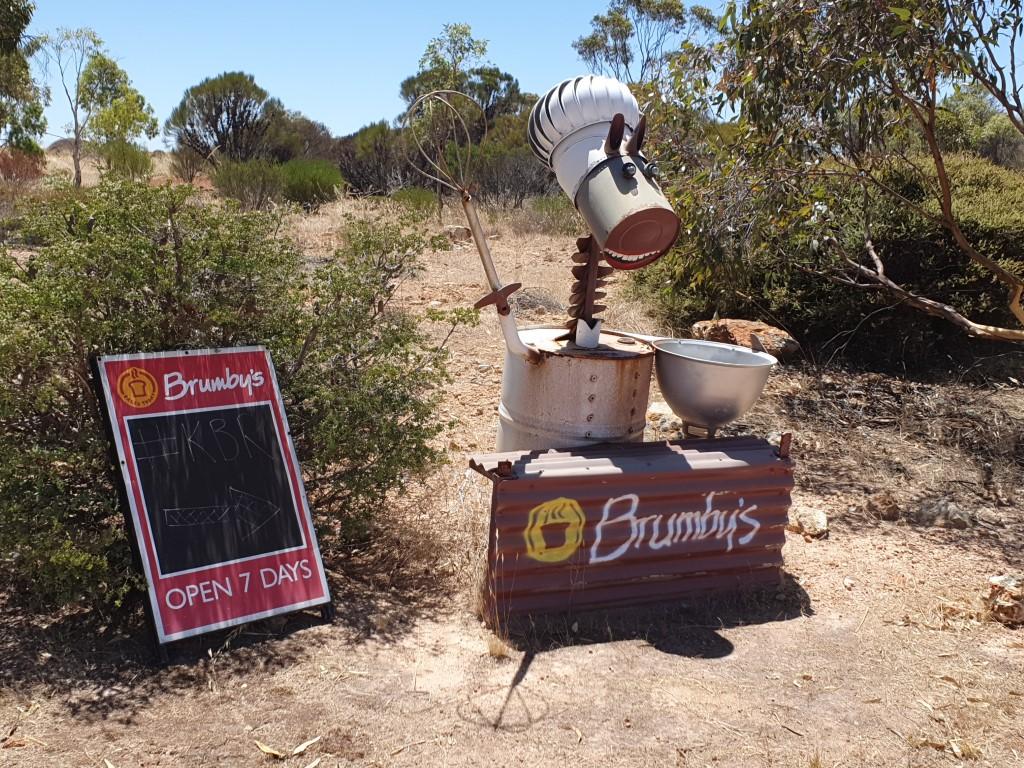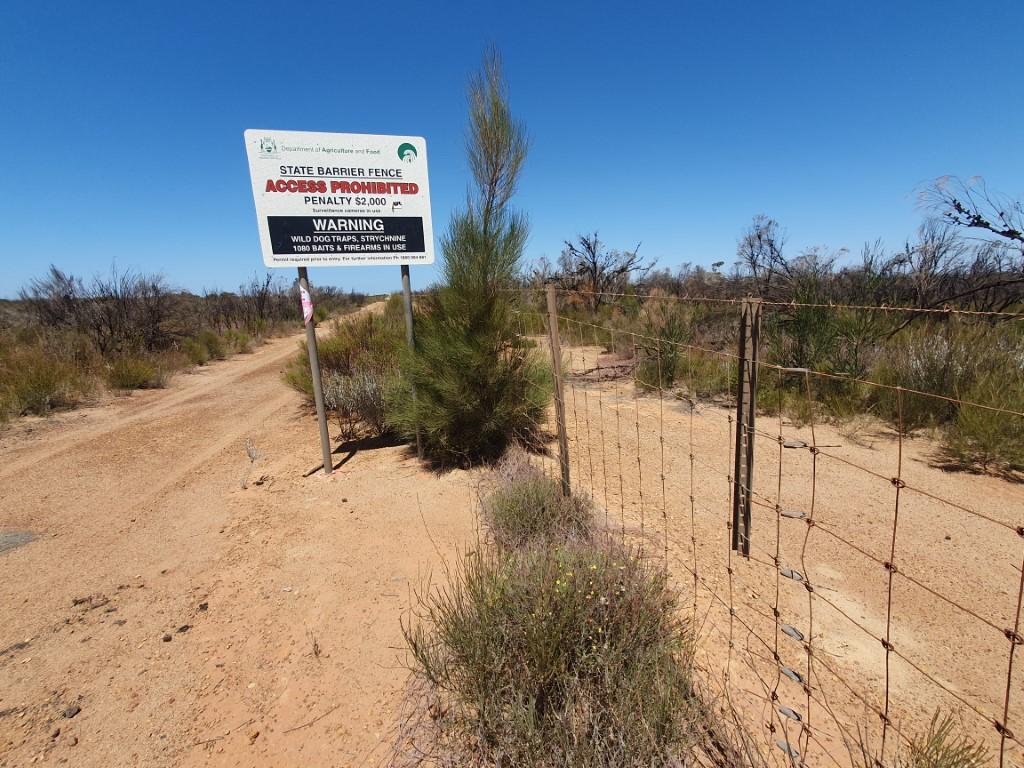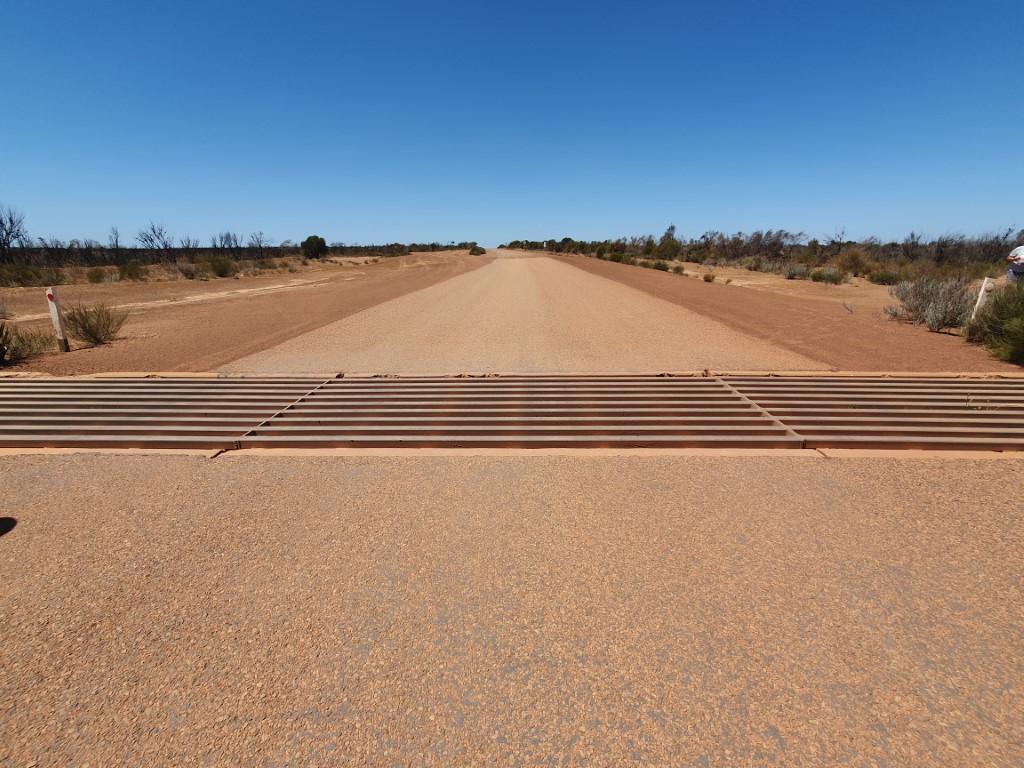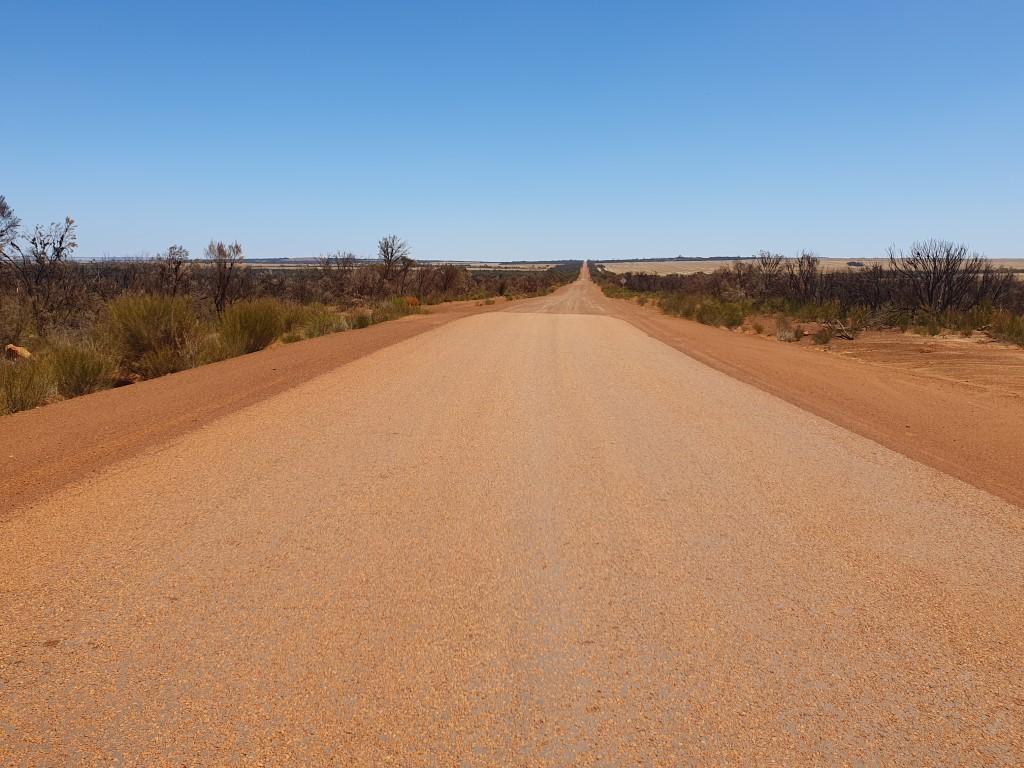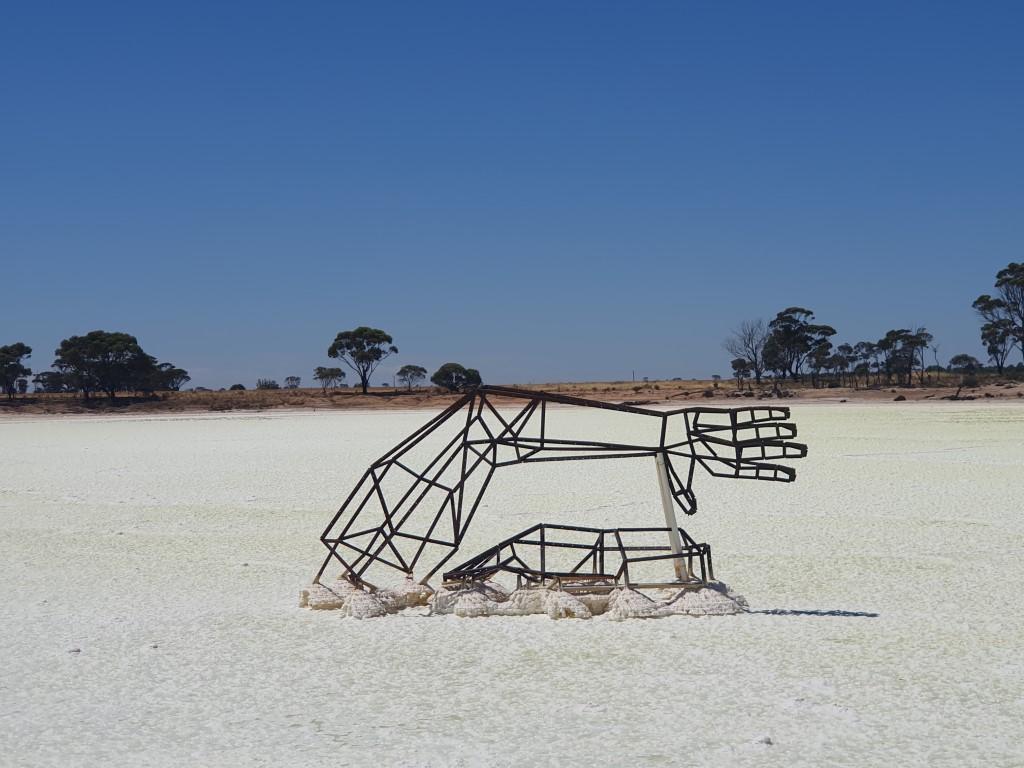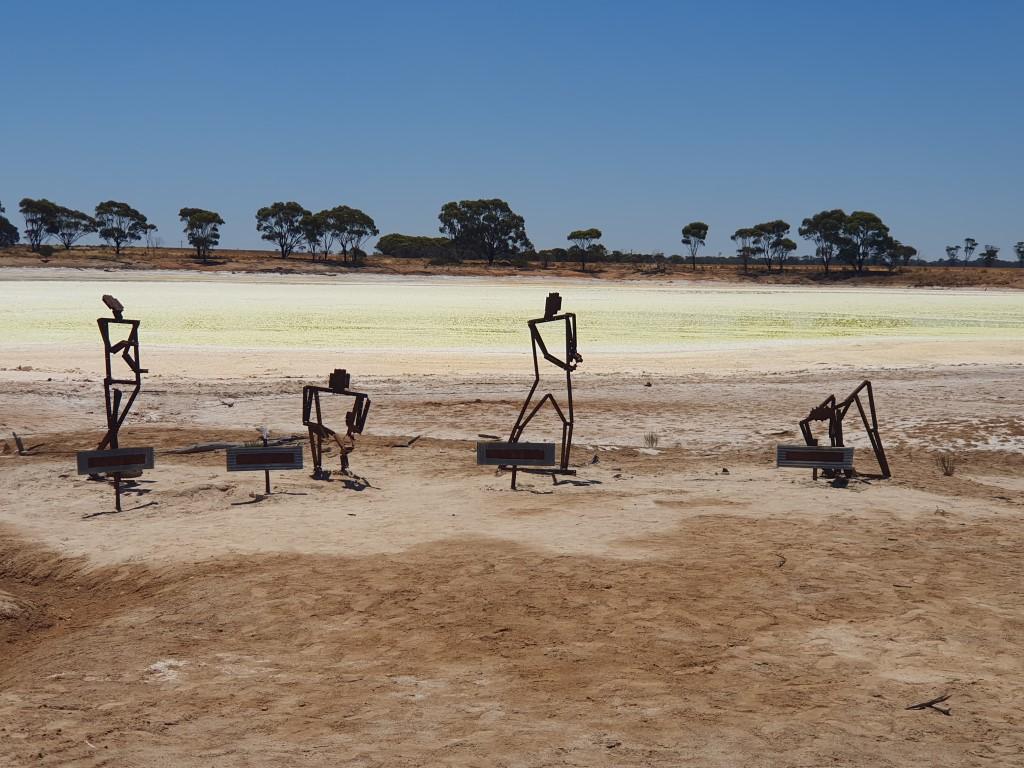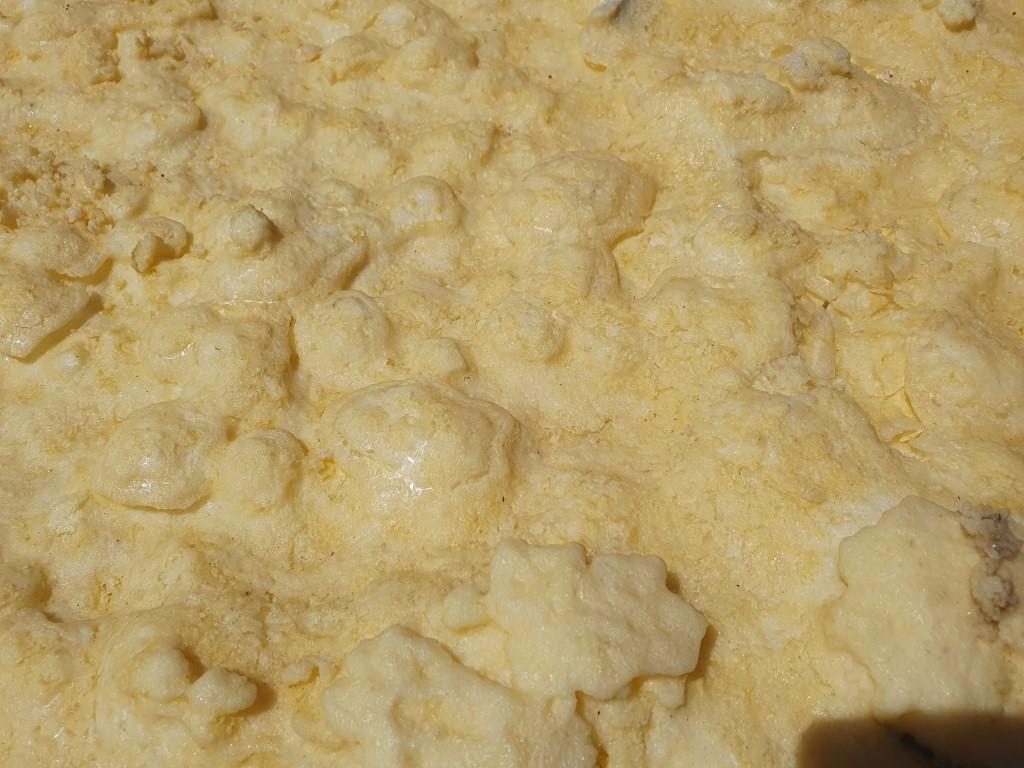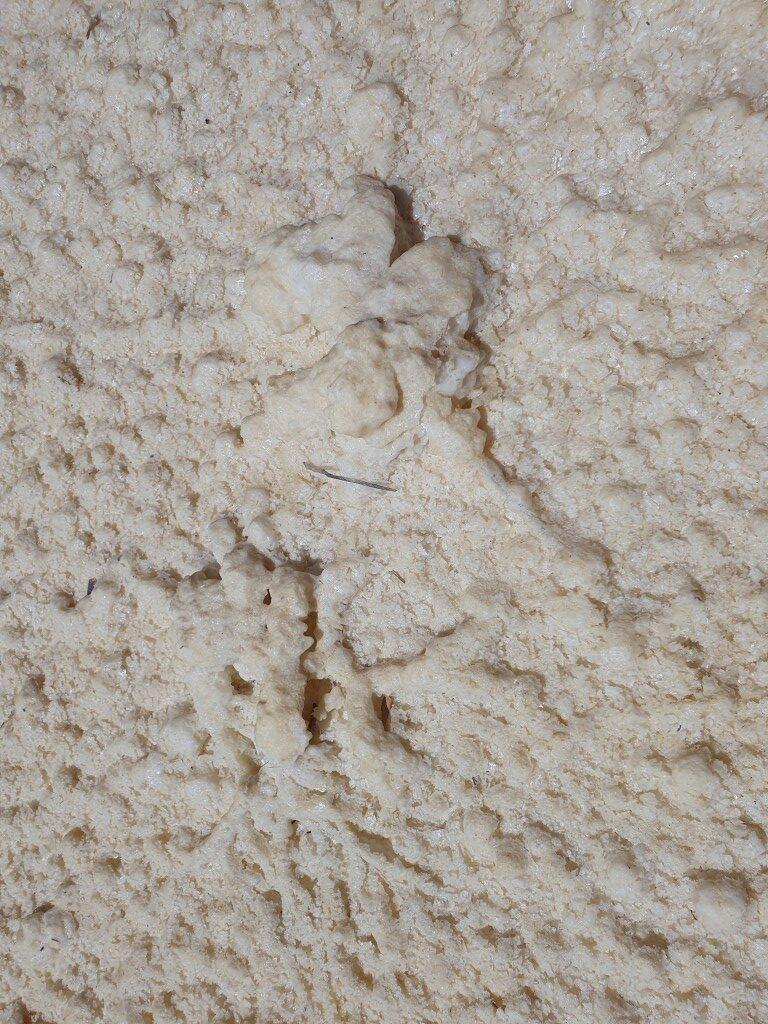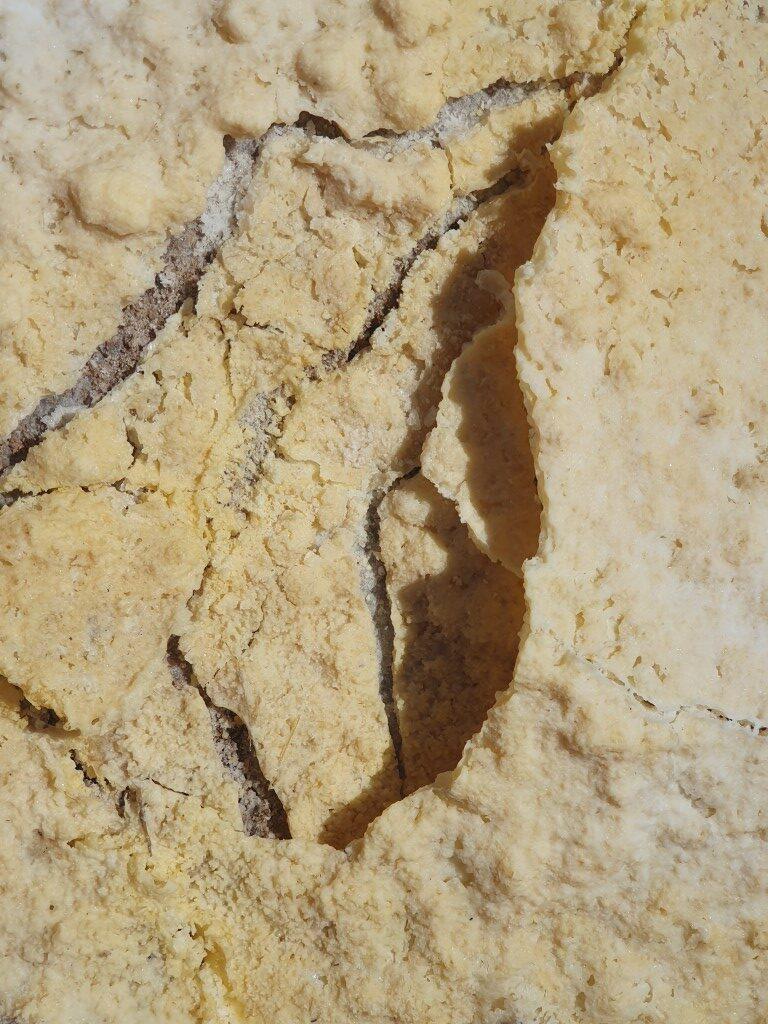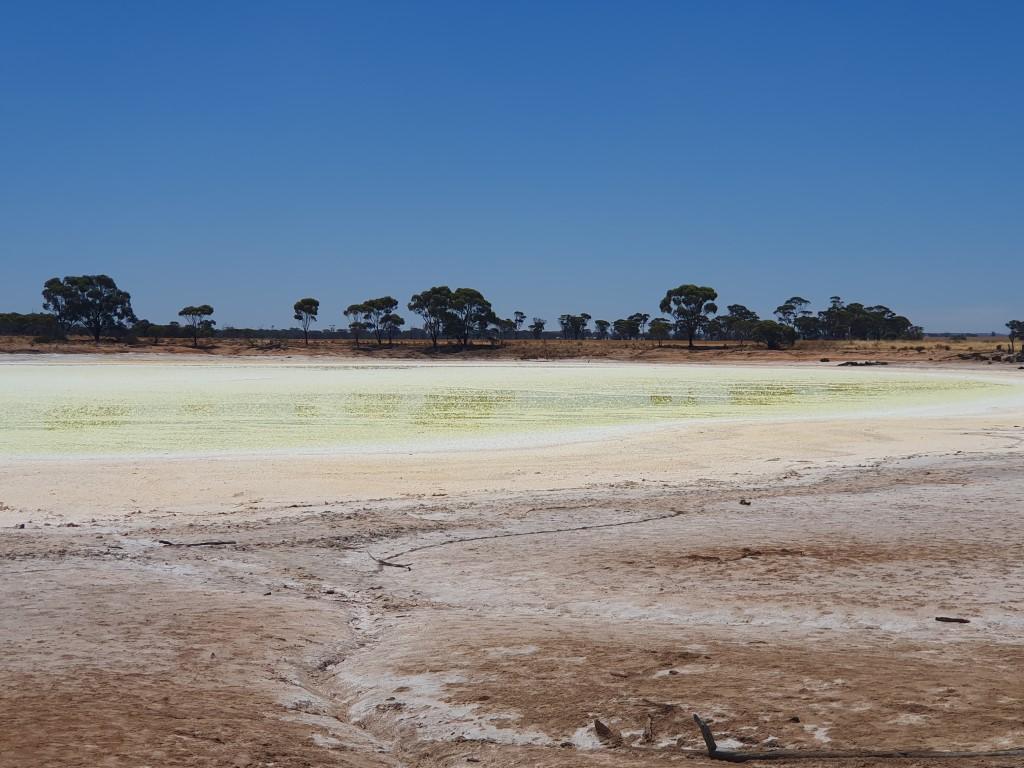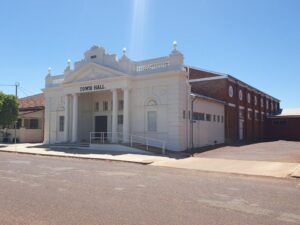
So we pushed on from Brookton through the Wheat Belt to Kondinin via Corrigin. The Seagulls had returned from their East Coast sojourn and were back in Albany after finishing a short trip with other friends who were in W.A. Seeing that we were Kondinin they made a beeline north to meet us there to see Wave Rock and the other attractions of the area.
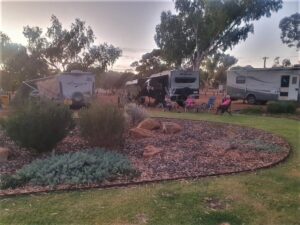
We met them at the Kondinin Caravan Park, a fabulous little council run caravan and cabin park, with about a dozen van sites and three cabins. Everything about this park was immaculate and well kept. And the amazing thing was that it was relatively cheap as well with power and water at $25 per night. Kondinin should be congratulated and rightly proud for offering such a brilliant facility for travellers in the heart of their small town. The weather was warm, the skies were clear and it really was nice to just sit out under the awning on the grassy area behind the vans and enjoy a sundowner or two and swap stories since the last time we saw each other.
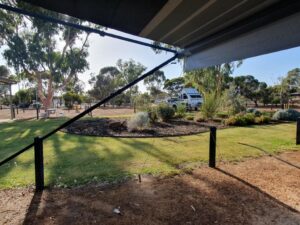
Kondinin itself is another charming regional Wheat Belt town. These little towns are quiet but full of character. They still survive from agriculture but also reap the tourist dollars without ripping off tourists and travellers.
We chose Kondinin for our three nights due to it being central to Hyden and the magnificent Wave Rock as well as Kulin and the Tin Horse Highway. It proved to be a full on two and a half days. Catching up with the Seagulls and seeing the these places with them was an unexpected surprise before they headed back west. We would continue around the Wheat Belt before meeting them again back in Busselton after some vists from our east coast friends in Margaret River.
All in all it was a great three days…
Wave Rock
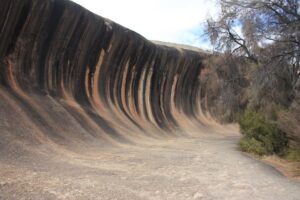
Most people have heard of Wave Rock yet it does not have the same level of reverence or mystique as Uluru, Kata-Tjuta, the Horizontal Falls or the Great Barrier Reef. Like ningaloo (the reef) it sits in a second tier of Australian iconic places and yet fully deserves to be in the first tier. Wave Rock is AWESOME…
No picture does it justice and nothing prepares you for your first glimpse as it appears in front of you and rears up, for all the world like a breaking wave turned to stone at the crucial moment. Indeed, from a certain vantage point it even looks like the waves you see in a surfing competition from a camera on a jet ski as the wave rolls past. It is absolutely stunning.
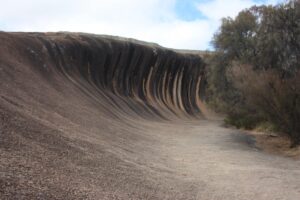
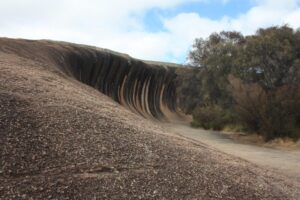
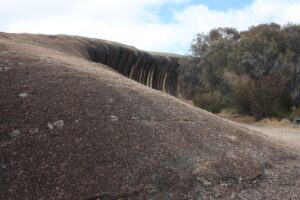
The natural staining on the face of the wall accentuates the imagery and heightens the scale of its grandeur. It is nature imitating nature and it is, in our opinion, a bonafide wonder of the world.
And again… we were privileged, with the Seagulls, to have it all to ourselves with only a handful of others there to enjoy its spledour.
Lighthorse Memorial
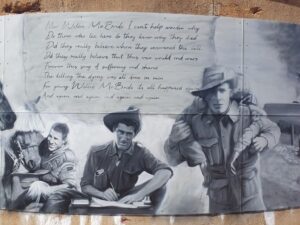
Sitting on top of Wave Rock, unknown to us beforehand, is a Light Horse Memorial. There is a metal sculpture of a Light Horseman, flagpoles and a concrete water storage tank with a painted mural dedicated to the Light Horsemen. Part of the mural contains a poem that is as salient and sobering today as it was then. It is an all to present reminder of the stupidity, futility and sadness that is human warfare…
Now Willie McBride I can't help wonder why Do those who lie here, do they know why they died Did they really believe when they answered the call Did they really believe that this war would end wars Forever this song of suffering and shame The killing, the dying was all done in vain For young Willie McBride it's all happened again And again and again and again and again.
Lest we forget…
Hippo’s Yawn
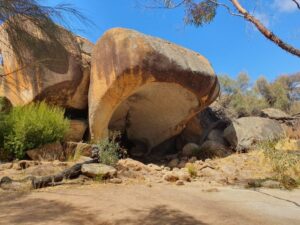
A short walk from Wave Rock is an even lesser known formation called Hippo’s Yawn. It’s not hard to see where the name comes from looking for all the world like the top of a hippopotamus’s jaws breaking through the surface of the water to crunch down on some unsuspecting hiker walking past.
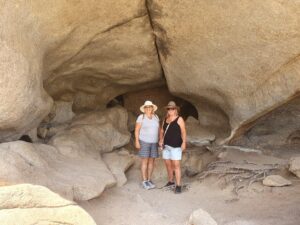
It is nearly 13m high and also needs to be viewed with something to provide scale against. In our case we took a a photo with Jo and Sandy Seagull to provide the scale by standing squarely in the hippo’s mouth. At least if it fell over you probably wouldn’t be crushed to death but it would be a pretty hard and difficult dig out…
Mulka’s Cave
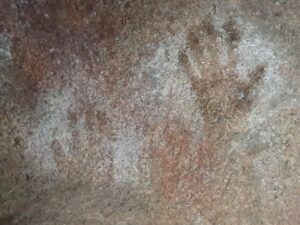
Also at the Wave Rock site is Mulka’s Cave. This is particularly noteworthy for the numerous rock paintings contained within it. Some of them are quite faint and we mostly only saw hand print outlines of the type produced by placing a hand against the rock and spitting ochre paint at it.
Mulka was an outcast aboringinal man and there are two versions of his story. One was that he was outcast because he had crossed-eyes and it was feared that he would bring a curse on those who looked at him.
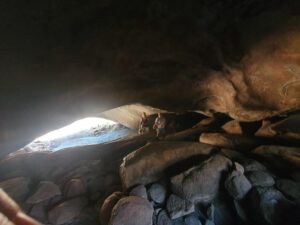
The other was that he was the son of a man and woman who fell in love but were forbidden to marry, which resulted in him having crossed eyes. Despite growing tall and strong he was a poor hunter because of his eyes so he reorted to catching and eating children. After being scolded by his mother for this he killed her as well. He fled to Mulka’s Cave but was hunted down and speared near Dumbleyung (our next camping spot) and his body left to rot and be eaten by the ants.
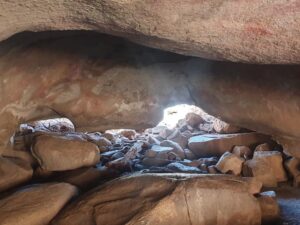
In any event, the cave is quite impressive and you can imagine that it would have been quite a comfortable place for an indigenous person to live in this area.
As a side note, in deference to Mulka’s cross-eyed affliction, it was at the cave that Rob unknowingly, until later, dropped his sunglasses never to be seen again. Although they were a pair of cheap roadhouse sunnies, they were polarised and very comfortable to wear. They were sadly missed…
Around Wave Rock
In addition to the wave, Hippo’s Yawn and Mulka’s Cave the scenery around Wave Rock is also quite striking. We came across a small weathered boulder on the edge of the path that from behind looked exactly like Darth Vader’s helmet.
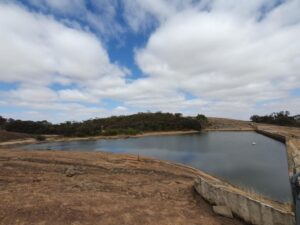
Also unbeknown to us was that there is quite a large water storage dame at the top of Wave Rock. This is the water storage reservoir for Hyden, the small town closest to Wave Rock. It’s fenced off as you would expect but does come as a surprise after walking up the steep slope at one end of Wave Rock. There are man-made water channels down below as well that must have served as water diversions back in the day.
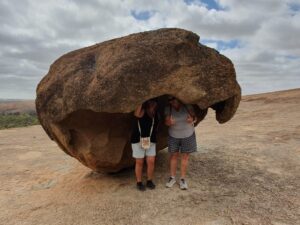
On top of Wave Rock there is a curious hollow boulder that has been gouged out by weathering and erosion on one side. Somewhat like a mini or baby hippo yawn. Very useful if a downpour occurs…
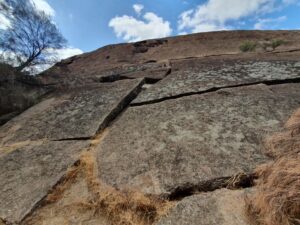
The lower flatter sides of Wave Rock also exhibit signs of ancient weathering and erosion with huge slabs of granite peeling off like giant pieces of orange skin. These slabs emphasise the age of the underlying rock and the staggering amount of time it has been sitting under the baking sun and soaking rains of the Western Australian outback.
The other notable aspects of the area are the striking salmon gums and red bottle brushes (callistemons) that grow in the area. Up close, the salmon gums shine as if they have been polished and they glow in the afternoon sun. The callistemons bring sharp splashes of colour to the otherwise drab scrub and there always seem to be wild bees harvesting the nectar from them.
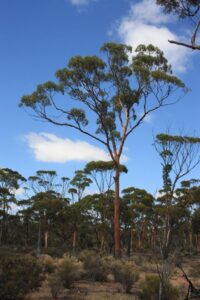
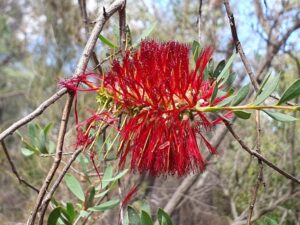
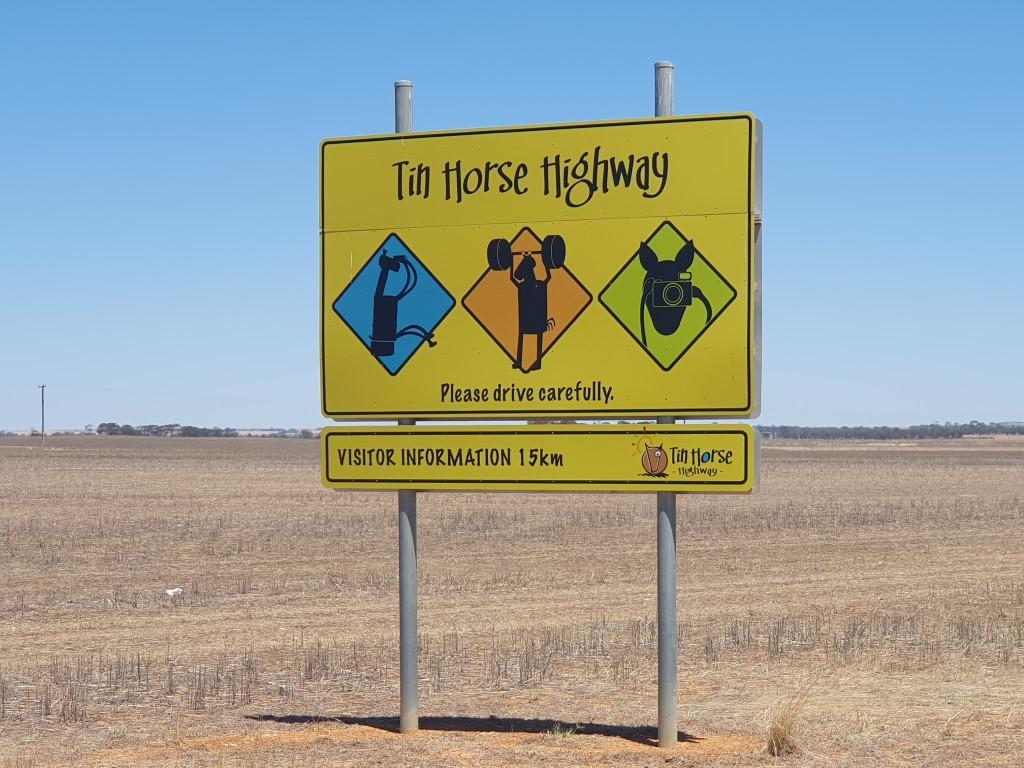
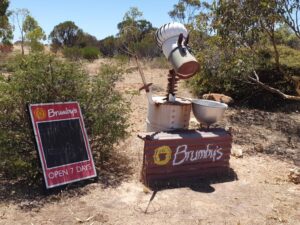
One of the quirkier aspects of the region is the Tin Horse Highway at Kulin. It is about 15km of highway from between Lake Grace and Kulin. Each side of the road is lined every few hundred metres with a bush sculpture featuring a horse theme usually made from old oil drums and any other scrap materials.
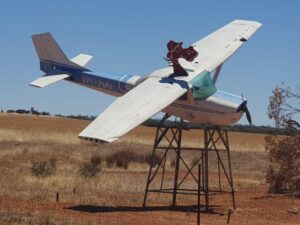
It originally started as a promotional effort for the annual Kulin Bush Races. The community has really gotten behind the idea and it has become a tourist attraction in its own right. There has been some serious thought and construction gone into some of the sculptures and they all exhibit that wry and laconic brand of bush humour that is all too rare in modern Australia.
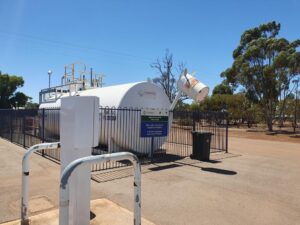
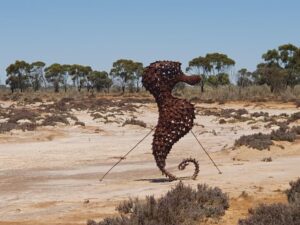
Even the 24 hour fuel station in Kulin has gotten into the act by turning an LPG gas storage tank into a tin horse sculpture. In town and along the highway there are well over a hundred tin horses, each with it’s own humourous taken of the idea and even some more serious ones such as a seahorse sculpture, which is a pretty decent work of art in its own right.
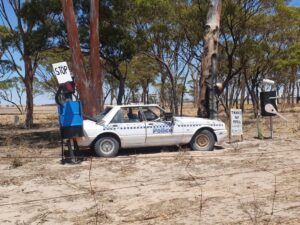
Even the police and the Defence Force have tin horses with their theme attached to them. Not sure if they’re officially sanctioned or not but wouldn’t be surprised if they were…
Our drive along the Tin Horse Highway with the Seagulls was a very enjoyable trip and probably the slowest 15km we have ever done stopping to take photos every few hundred metres.
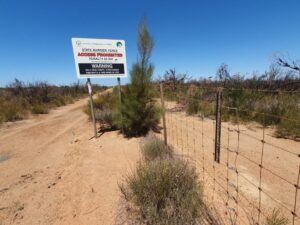
After our visit to Wave Rock we continued on to have a look at a stretch of the Rabbit Proof Fence. Made famous by the film ‘Rabbit Proof Fence‘ there are actually three vermin fences but the one we visited was the original Number 1 Fence running north-south from west of Eighty Mile Beach to west of Esperance.
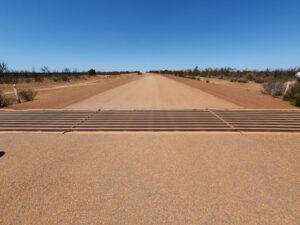
It is a strange sort fence, not only for its length, but also for its simplicity. Indeed, the size of the gaps in the wire look as they anything up to a cocker spaniel could easily get through it. At the point where we viewed it there was a deliberate gap in the fence with nothing more than a cattle grid separating either side.
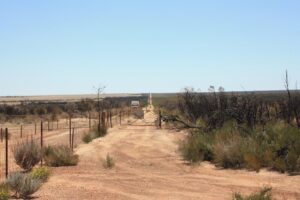
Apparently the fence is, or was, the longest unbroken fence in the world (cattle grids notwithstanding). But despite being a fairly simple straight-forward post and wire fence it is an extremely impressive structure that can’t really be appreciated until you see a map showing it’s route from the bottom of the country to the top.
It’s the things like the Rabbit Proof Fence that make Australia such a unique place. It is not a monument, a tourist attraction or an ‘experience’. It is a piece of living, functional history that sits under the sun and does it’s job day after day after day…
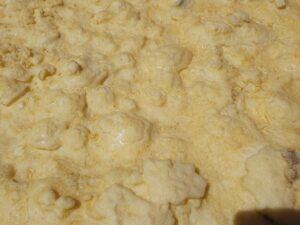
Statues Lake is sizable salt pan lake 10km from Kondinin. At the time of our visit the lake was completely dry and mostly pure white with some bands of yellow’ish salt crust. Apparently at various times of the year it can become a fluorescent yellow colour.
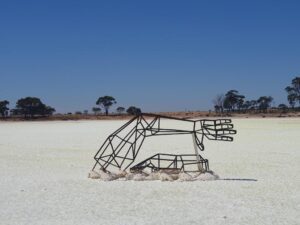
Whilst there are quite a lot of salt pan lakes in W.A. this one is notable for the sculptures set into it. The most striking sculpture is of a swimmer with his head and arm breaking the surface of the lake in a freestyle swimming motion.
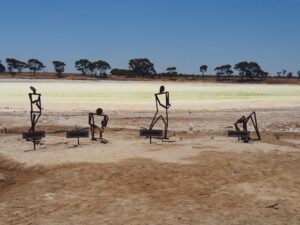
The other scultpture is of a group of figures in various poses. Surrounding the figures was a thick crust of yellow salt that crunched heavily underfoot as shown in the short video below. It must have been devastating back in the day when these filled up with water but were unusable because of the salinity.
Once again, at Lake Kondinin (Statues Lake) the quirkiness of the whole region is on display giving the whole region around Kondinin a character of it’s own.

